WIPLSTIX.COM
828 713 2424

Wiplstix Travel/ Practice Violin
the "infiddel".

WipLstix is a very handy travel violin I invented in 1999. There are now over 850 of them floating around the galaxy, and they are still made solely by me in my shop in the southern Appalachians. The length between its bridge and nut is that of a standard 4/4 violin, but the body has been minimized to maximize portability. WipLstix is a self contained unit, and with a 1/8th size bow and inflatable chinrest (sold separately), they will fit inside a 2" diameter by 24" long watertight, traveling, tube transporter.
As of 03/20/22
Wiplstix are back in production! After a 3 year break to pursue other interests I am excited to be making my "pretty liddle fiddle" again. I hope to have these new Wiplstix ready to send out by early April.
New things:
I am adding an option for higher-quality strings on the Wiplstix. Currently, I am waiting for the cheap strings That are included in the cost of the Wiplstix. They are on a slow boat from China and wont be here until the end of April. The schwanky Larson Danish strings will be here in a week or so. Those will allow me to send it out a month earlier. If you dont order the Larson Strings then your fiddle will be sent out in early May.
For those that want a more traditional set up, I am excited about adding the option of a traditional chinrest/ shoulder rest . An adaptor will replace the tuning pitch pipe at the butt of the instrument and a lightweight chin/ shoulder rest can be screwed in and out. The rests won't fit in the case like the inner tube but they break down and are quite minimal.
There are 3 options of wood:
Black Walnut- is native to the East coast. It is a common, fast growing, "early succession" tree which makes it high on my list for regenerative agriculture. It is the standard workhorse wood that I prefer for wiplstix being very stable, having a warm sound, and rich dark chocolate color.
Figured cherry wood- As I was cleaning up the shop this winter I found one last board of this uniquely figured old growth cherry. This exceptional wood is reserved for fiddles if you like a little eye candy.
Tulip Poplar- is a light cream/ greenish color. It is the least dense wood of the three. The softer the wood in wiplstix the warmer and louder the tones, but you may compromise durability. I made wiplstix guitars a long time ago, and the ones made from the poplar wood had the best tone. Im not sure whether that will translate to the fiddles. The wood is very ordinary looking, and very light of weight if that is important.
If you would like to order a wiplstix this spring, send me an email to [email protected]
and I will let you know when to make a payment Thank you for your interest, and please feel to browse the site especially the wiplworld pages.

"Proves you not only think outside the box,
you don't even know where the box is!"
- A. Miller
Wiplstix customer

DIY travel violin?
Replies (16).

This discussion has been archived and is no longer accepting responses.

Violinist.com is made possible by...

Metzler Violin Shop
Southwest Strings
Bobelock Cases
Johnson String Instrument/Carriage House Violins
Bay Fine Strings Violin Shop
Jargar Strings
Fiddlerman.com
FiddlerShop
Barenreiter
Nazareth Gevorkian Violins
Laurie's Books
Discover the best of Violinist.com in these collections of editor Laurie Niles' exclusive interviews.

- Mandolin Family Instruments
- Violoncellos da Spalla and Related
- 5-String Violins and Fiddles
- Octave Violins, 5-string Violas and Octave Violas
- Travel and Backpacker Fiddles (and Violas)
- Baroque Instruments (including pochettes)
- Selected Specials, Custom and Vintage
- Gallery: Custom and Discontinued
- Overview and Getting Started
- Examples of Some of Our Custom Work
Additional Information
- D. Rickert Musical Instruments
- Facebook Business Page
- Photo Galleries and Demos
- Latest News
- Shipping & Returns
- RSS Syndication
Account Navigation
Currency - all prices are in aud.

- Call us on 7068960909
- Sign in or Create an account

The NEW Mountaineer VIII M2 Travel Violin

Add to Wish List
Click the button below to add the The NEW Mountaineer VIII M2 Travel Violin to your wish list.

Product Description
A new variation on the mountaineer series, our most popular travel violins and fiddles.
The Mountaineer Backpacker Fiddles have been the most popular instrument we have ever sold. The NEW Mountaineer VIIIs have curved backs, tops and sides; thus, increasing their girth in the middle of the body where the bridge sits. With their larger bodies, the Mountaineer VIIIs are still tiny instruments with a full 4/4 overall length and, most importantly, a full 4/4 playable string length; about 13 inches, like a regular violin or fiddle. Further, the new Mountaineer VIIIs still fit perfectly into the same 4 inch diameter case as their predecessors.
The NEW Mountaineer VIII M2 Travel Violin is designed to meet a very specific requirement of some players, the ability to attach a full size violin chin rest. With our new Velcro-attached adjustable shoulder rest and full-size chin rest attached, the instrument is held and feels EXACTLY like a full-size violin.
Unlike the other Mountaineers, the Mountaineer VIII M2 utilizes a full-size over-the-tailpiece side-mounted chinrest (called a “Strad” chin rest) and a Velcro-attached ajustable adjustable shoulder rest (supplied with the instrument at no extra charge). Both the full-size chin rest and the shoulder rest are removed for stowing the instrument in its padded 4” tubular case.
The playing experience is very different from the tiny center mount chin rest used on our standard Mountaineer VIII Travel Violin.
Introducing the new Mountaineer VIII M2
The Rickert Mountaineer VIII M2 Travel Violin is a really skinny (but full 4/4 length) travel fiddle that is extremely durable for the most punishing environments. This instrument’s predecessors have now been on journeys the U.S., Europe, Ireland, U.K., Canada, Middle East, Australia, New Zealand, North Africa and the African sub-continent, Israel and South Africa. The Mountaineer has also found its way onto to large seagoing vessels, including at least one on a nuclear submarine. Several airline pilots take their Mountaineers with them as carry-on luggage!
The instrument is just 2.5" wide and is standard 4/4 violin length (body is 14" and total length about 23" like a regular violin).
The Mountaineer VIII and VIII M2 are very different from their predecessors, in that they utilize a full size violin type bass bar AND a sound post. The sound post, necessary for damping shrill high frequency overtones while enhancing mid and low frequency overtones, is fixed in an optimal position. The sound post is held into position by a tiny carbon fiber rod running through a small hole in its center. The carbon fiber rod protrudes into the top and back of the instrument and is also held with a tiny amount of resonant glue. Looking at instrument photos, one can see a small black dot just behind the treble side bridge foot. That is the carbon fiber rod. The advantages of the permanently fixed sound post are twofold:
- It does a better job than then the internal framing doing double duty as a sound post we used on earlier versions.
- It will not become dislodged, even when the instrument is subjected to shock (e.g. being dropped from an aircraft overhead…this actually happened…that is a about a 5 foot drop!) and extreme temperatures and/or humidity (very low or very high).
The Materials
Earlier versions of the Mountaineer were available with various combinations of tone woods. The Mountaineer VIII is available ONLY with sides and top of Western Red Cedar with a Red Mountain Cedar (a hardwood from Peru). For this small instrument, the Western Red Cedar sounds much nicer (more warm and full-bodied and, overall, more sonorous) than spruce. The mahogany backs used on some earlier versions has been replaced with Red Mountain Cedar in order to comply with restrictions on most versions of mahogany when shipped outside of the U.S.
The Chin Rest
In order to afford the same instrument “hold” as used with a full-size violin, a slightly modified removable Strad-type chin rest is used. Since the instrument would be too narrow to accommodate this type of chin rest, a small chin rest “platform” is integrated into the tail end of the instrument. This tiny platform can easily be seen in the photos of the instrument. For aesthetic reasons, this platform is made of dark walnut, the same material used for the instrument back.
Needless to say, the chin rest must removed in order to stow the instrument in its tubular case.
Tuning Pegs
The instrument is fit with the innovative Wittner internally geared planetary pegs (i.e. Wittner Fine-Tune pegs), at NO CHARGE (a $120 value). These tuners are so accurate that fine tuners are not needed. They simply turn and lock into place just like high-end geared guitar tuners, but they look just like regular ebony tuning violin pegs.
Uses a Globetrotter 4" case. The case needs to be at least 24” in length to accommodate the instrument. In order to accommodate a ½ size, the case should be 26”. For a full-size bow, the case should be 31”. See Related Items.

Shoulder Rest
The Mountaineer VIII utilizes our newest Velcro-attached adjustable dense foam shoulder rest. The shoulder rest is included in the price of the instrument. The new shoulder rest is incredibly comfortable and is really easy to attach and adjust.
The Sound of the Mountaineer VII
The Mountaineer VIII M2 sounds pretty good for a 2.5-inch wide violin. While such a small instrument could not possibly sound as powerful and full-bodied as a good full-size violin (those pesky laws of physics), The Mountaineer VIIIs have a surprisingly big and warm sound. In other words, it is rather sonorous. It is plenty loud enough to jam with other musicians.
Watch the videos to get an idea of the sonic capabilities.
Optional Pickup
Many customers opt to have a pickup installed. There are many pickup options. Please contact us if you wish to add a pickup.
Product Videos
A second test of the fiddle through the installed pick up. Using Fishman ProEQII preamp and Fender Acoustisonic Junior amp.

Find Similar Products by Tag
Product reviews, write your own review.
We promise to never spam you, and just use your email address to identify you as a valid customer.
This product hasn't received any reviews yet. Be the first to review this product!
Find Similar Products by Category
Related products.

Newsletter signup
Further info, connect with us.
All prices are in USD . © 2024 Don Rickert Musician Shop | Sitemap | Powered by BigCommerce

How to Practice Violin While Traveling
by Lora | Feb 2, 2012 | Violin practice tips | 5 comments

Do you travel very much? One of my students is a long-haul truck driver and carries his violin with him.
Did you know you can turn all that road or air time into beneficial practice time? Read on to learn some specific exercises.
But first, don’t underestimate the value of a TRUE vacation–one where you leave all chores behind and just enjoy yourself. That kind of vacation clears the mind and rejuvenates the soul and can only help your violin playing.
With the tips in this message, I don’t intend to intrude on that very important time. Instead, use these tips during dead time in the car or on the plane as you travel to and from your destination. If you use these tips properly, that time is PURE PRACTICE GOLD.
Check out my YouTube channel for video demonstrations of these exercises (http://www.youtube.com/reddesertviolin).
IMPORTANT DISCLAIMER: Don’t let these exercises distract you if you’re driving. You know your limitations and the level of concentration you need, so exercise wisely. 🙂
1. Use travel time for active listening: Face it. None of us listens as much as our teachers want us to. Certainly not in a setting where we can truly pay attention and absorb all the details. Travel time is perfect for listening. It takes hundreds of hours of ACTIVE listening for a student to absorb and begin to develop her own concept of great sound, good style, and personal interpretation. You can listen to your local classical radio station, internet radio, your iPod, or CDs. Don’t forget that libraries carry a great selection of classical CDs!
When listening to the radio, pay attention to the announcer. Get the name of the composer, and try to get the names of the performers, the orchestra, the conductor, and the soloist. This gets you familiar with who’s who, plus you will be able to buy the music later if you really love it! Try to be observant and answer the following questions: Is the piece Baroque, Classical, Romantic,or 20th Century? When did the composer live, and what country were they from?
Try to compare one composer with another–what makes them different? What instruments are used in Baroque that aren’t used in Classical? What bow strokes do you hear in Classical that you don’t hear in Baroque? What is the time signature?
Try also to compare a symphony, quartet, and sonata. How are they different? How many instruments in each? How many movements? What instruments? Your observations will teach you a lot and you will become a better active listener.
2. Name That Tune: If you have other people with you, have someone skip around to different tunes on your Suzuki cd’s. You should be able to name the tune in just a couple seconds, even in the middle of a track!
3. Ghost Bow: This is where you play the cd of your review material, and you “ghost bow” along with it in the air. Try to use all the right bowings, and try to remember to do the dynamics! Big bows for forte, and small bows for piano.
4. Rhythm Work: “I Can Read Music” by JoAnn Martin is perfect for travel time. The left side of the book is pitch, and the right side is rhythm. You can work your way through the right side of the book, clapping and counting. You can even bring a metronome and practice clapping with your metronome.
5. Copy Cat: One person claps a rhythm, and you have to copy it perfectly.
6. Flash Cards: You can use the left side of “I Can Read Music” by Joanne Martin, or you can buy flash cards for every aspect of music imaginable.
7. Memorize Key Signatures: What Major/Minor keys have the same key signature? What finger pattern goes with each key signature?
8. Strength Building: Bring a clothes pin along. Use it to build finger strength. You can also do isometric exercises, but I like the clothes pin, because it’s easier to see your progress!
9. Pencil Exercises: For beginners, just work on the “Jelly Fish” exercise. This is impossible to describe–please see the video demonstration. For intermediate players, the vertical, horizontal and blastoff exercises are perfect for travel.
10. Vibrato Exercises: “Vibrato Egg”–If you have a vibrato egg, bring it with you. Vibrato eggs can also be made. I like the “Silly Putty” sized egg, because it fits smaller hands. Or use a small Easter Egg. Put just a spoonful of raw rice inside. These eggs are held in the left hand and the objective is to oscillate the egg back and forth with the wrist in an even, relaxed way. “Cello Vibrato”–Hold your right forearm across your chest. Let your left hand practice vibrato “cello-style” on your forearm. No squeezing!
11. Greasy Elbow Exercises: “Ghost bow” along with a recording of your repertoire, but do the ghost bow by scrubbing up and down your left arm with your right hand. (Scrub a Dirty Doggie exercise) This emphasizes and isolates the elbow movement, and prevents the shoulder from “helping”.
There you have it! Eleven easy ways to come back from your vacation ready to pick up where you left off. Make good use of your travel time and have a safe, refreshing vacation.
Hey there, is it an actual technique to learn the Violin this way? I’m a Violin Player, and i feel this can be a technique for real to learn.. do you have any info? I’d really appreciate it.. Thanks.~~~
LOVE THIS INFO IM LEARNING OBS BECAUSE OF YOU!
SWEET! Once you have it all learned, send me a video! Good luck! –Lora
Great suggestions…I am always missing my violin when I’m away! I would also like to add that if you can bring your violin, bring a practice mute so you can practice in the hotel rooms without bothering anyone!
I was just away and I watched your You Tube and you said that you could provide the sheet music for Dry and Dusty. I was wondering if you could send that to me? Thank you so much!
Nancy–I sent the music to you. YES, practice mutes are a god-send when in hotels! I never travel without mine. I’m glad you pointed that out. I guess I was thinking of vacations WITHOUT the violin.
See you around! –L
Trackbacks/Pingbacks
- Practicing Violin Techniques & Tips... Without Your Violin | TakeLessons - [...] came across this great article by Loralyn over at Red Desert Violins, and wanted to share some of her…
Submit a Comment Cancel reply
Your email address will not be published. Required fields are marked *
This site uses Akismet to reduce spam. Learn how your comment data is processed .

Travel with your Violin with Great Peace of Mind
It can be a bit nerve-racking to travel with your most prized violin. So many things can go wrong… theft, heat, shocks.
Choose good insurance and a sturdy violin case. Loosen your strings and bow hair. Keep your violin in a climate-controlled room if possible. Monitor hygrometry changes and responds with silica gel desiccant or a Dampit to humidify your violin. Then, practice with a mute and ask for a safe room at the hotel you have chosen wisely.
There are a lot of factors you can manage at home that aren’t always in your control once you hit the road, but fear not– plenty of professionals do this kind of thing regularly and have kept their instruments alive for years, and you can too by taking some simple precautionary steps to keep your violin safe while traveling.
Violin Insurance
Before leaving, if your instrument is expensive, check with your insurance company how well insured you are against theft. If you are not, you should reconsider your insurance policy and purchase another insurance or option for your existing insurance. When I traveled a lot, I had ensured my best violin, but not the other ones, less pricy, that I have. Now that I travel less, I have downgraded my policy. So this is something you can adjust over time. The main thing is that your insurer knows that you travel. Then you should be properly covered in case of a theft.
What case to choose
Make sure your violin case is up for the task before you begin your travel. You’ll want something rugged, well-made, and snug. Case material is dependent on a number of factors specific to your use case, so consider whether you want something rock-solid and heavy or durable and light. Go for something weatherproof or perhaps even air-tight, and try to make room in the budget to buy a case with some quality suspension, a feature that uses some variation of interior material to protect some of your violin’s more sensitive parts from taking the impact from any jostling of the case. It’s really worthwhile to invest in a solid case rather than risk something going loose and wreaking havoc on your violin instead.
If you want to go all out on a hard case, one of the most high-end cases you can get your hands on is a Musafia . Hand-crafted in Cremona, Italy, this brand has been trusted by the most elite performers for ages. They’re thoroughly tested for durability before being sold and come in all sorts of designs that cut no corners, being both incredibly rugged and aesthetically pleasing. They come with just about anything you could ask from a case, as well as some features you probably wouldn’t have even thought to include in a case. The Luxury Classic Dart S3011 is a fine example of this and just one of their many offerings to consider.
If you’re after something affordable and reputable, check out Bobelock [https://www.bobelock.com/cases/violin/violincases.html] violin cases. Their cheaper cases don’t come with a lot of bells and whistles, but the brand does come with a great reputation spanning over a century and countless anecdotes of approval. The Bobelock 1047 in particular is a hefty case that comes with suspension and a built-in hygrometer at a reasonable price on Amazon.
Last thing, when you travel you usually walk a lot between buses, taxies, trains and planes. This instrument case back pack strap is shoulder padded for comfort and is a cheap and clever add-on to your violin case. It helps you carry your violin or viola with less pain and effort in those circumstances.
Loosen your violin’s strings and your bow’s hairs
In order to compensate for any potential warping which may arise throughout your travel, you should loosen the violin’s strings before storing it. Both the wood and the strings are subject to their atmosphere and can expand or contract depending on a number of factors, so to prevent any such variations from causing any complications with your violin (and to make sure your sound-post doesn’t take a trip through the back of your violin), loosen the strings before placing your violin in its case. You should also loosen your bow’s hairs, of course, for the same reason you do whenever you’re not playing.
Never store your violin in your trunk while traveling
Whether you’re on a bus, a train, or driving your own car, you do not want to take a chance on leaving your violin in a volatile place like a trunk. If you travel with your violin stored out of sight, you’re throwing its temperature control out the window and instead subjecting it to what’s more often than not an unregulated atmosphere. On a hot day, it gets the worst heat in the whole vehicle. On a cold day, it gets the worst cold. It could be dry back there, or it could be humid– it’s not up to you. Even if the trunk happens to have a good atmosphere for storing a violin (don’t count on it), you’re not even sure it’s going to be there if you don’t secure it well, as it’s at a much higher risk of being stolen than if you were to just hang onto it yourself. Keep it nearby and treat it with the care it requires at any other location.
For the same reasons, don’t leave your violin unattended in your car. You don’t know who might come by uninvited, and you do not want to leave it exposed to the elements. Cars heat up and cool down very, very quickly– don’t take the risk.
My old teacher used to compare his violin to a child that you would never leave in the car alone but bring with you, or leave on the floor instead of comfortably installed on a chair!
Keep your violin in climate-controlled rooms at all costs
As stated before, when you travel with a violin, it’s subject to whatever atmosphere you’re in. It’s important to prepare your violin for weather variations during your travel, but what would be even better is to avoid atmospheric complications in the first place. Obviously, you’re not in charge of whether it’s dry or humid outside, but optimally, you do have a say in how the weather feels inside. By all means, do what you can to maintain a healthy environment where you’re staying to keep your violin in good shape.
The stability of the environment is crucial, as the violin can adapt to a certain temperature or hygrometry, put changing all the time these factors are another story.
Now, depending on the part of the world you travel to, the air can be too dry or too humid. Remember that those old Italian luthiers didn’t design string instruments with around-the-world tours in mind! But there are a couple of ways to preserve your instrument integrity and playability without too much effort.
Defend your violin against hygrometry variations
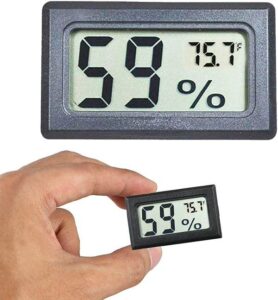
The violin is a natural instrument: it is made out of wood. And wood expands with humidity and retracts when the air becomes dry. This can have many consequences on the setup of the instrument, the tension of the strings on the bridge. The sound can be affected, and even cracks can happen to the body of the instrument. In eastern countries, the extremely humid atmosphere can cause the glue to melt and the body and the ribs and back to open slightly!
So the first thing you need if you travel far or in different climates is a small hygrometer to carry in your violin case if it didn’t come with one. This one has a really small form factor and is cheap on Amazon. It fits easily in a violin case.
Fight humidity in your violin case with dehumidifiers
If you’re going somewhere where it’s humid, take along a dehumidifier. There’s a number of products out there that can be used to reduce your instrument’s humidity if necessary. The simpler I’ve found to use is for example these silica gel packets , which have a good desiccant action and are easy to fit in my case. Be careful about this, though, as you can easily damage your instrument if you overcompensate for the excess moisture and wind up instead of drying the instrument out. In order to ensure your instrument maintains an optimal moisture level, use a hygrometer to monitor said moisture level in your violin.
Fight dry air with humidifiers
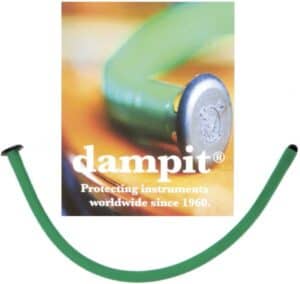
On the other hand, if you’re expecting it to be dry where you’re going, get yourself a humidifying product, such as the well-known Dampit . A Dampit does what you would expect: it gradually releases moisture into your instrument to avoid any humidity problems. Just let your Dampit in a glass of water before inserting it into your violin. Be sure to remove the excess water, of course, by carefully wiping it with a dry towel.
Just as you should be careful not to overdo it with the dehumidifier, be sure not to over-humidify it either. Again, your best bet is to use a hygrometer to keep an eye on your violin’s humidity levels and have the necessary materials on hand to counteract them as needed.
Practicing your violin in a hotel
While traveling with a violin, naturally you’re going to want to practice, but your fellow hotel guests might not be as eager about the notion as you are. In the interest of being considerate towards the other guests, make sure to bring a mute with you, and maybe even consider some other routes to further dampen the volume of your instrument.
If you have an electric violin, you can play without too much noise, as I have detailed in this post . But if you need to practice with your acoustic instrument, then you need to choose the heaviest mute such as a brass mute. I am pretty happy with this one on Amazon , not too expensive considering how practical it is.
It’s probably a good idea to save your playing for daylight hours as well. If it ends up being a problem, the worst-case scenario is someone from the front desk asks you to stop, so don’t be afraid to practice while you’re staying at a hotel.
Hotel safety for your pricy violin
Yes, you need to be considerate of your violin even when it comes to choosing your hotel. Every problem previously mentioned can be a risk in a hotel room if not considered ahead of time. If you can help it, choose a hotel located someplace safe. To mitigate any risk of theft, try to get a room on the higher levels of the hotel. If you’re concerned about improper care or bad intentions from hotel staff, opt to decline housekeeping service during your stay. Depending on the environment, it may also help to keep your violin relatively close to the room’s AC unit for temperature and humidity regulation as needed. As usual, take appropriate measures to monitor these factors and adjust them accordingly.
If you can travel with a cheap instrument or a cheap electric instrument, then things will be easier in all respects. But if you need to bring your pricy acoustic violin, then be extra careful. Ask if the hotel has a big safe in which you could store your instrument. Or if the manager has a safe room for valuables. You might be offered a way to be reassured with special consideration.
Basically, do whatever you can to monitor your violin’s condition when you travel just as you do when you’re at home. Plan your journey ahead of time to avoid any subpar conditions for your violin, and make sure you have the materials on hand to keep it in good shape should any issue arise. Other than that, hit the road, and get ready to ace your next performance.
I have been playing the violin since the age of 6. I have studied, like many, classical music at a conservatory. At the same time, I discovered Miles and Coltrane, BB King and Clapton... So I decided to learn how to improvise, how to free my playing, and how to incorporate these new elements in my music. This new Violin Trend, this is what I want to share with all of you!
Similar Posts
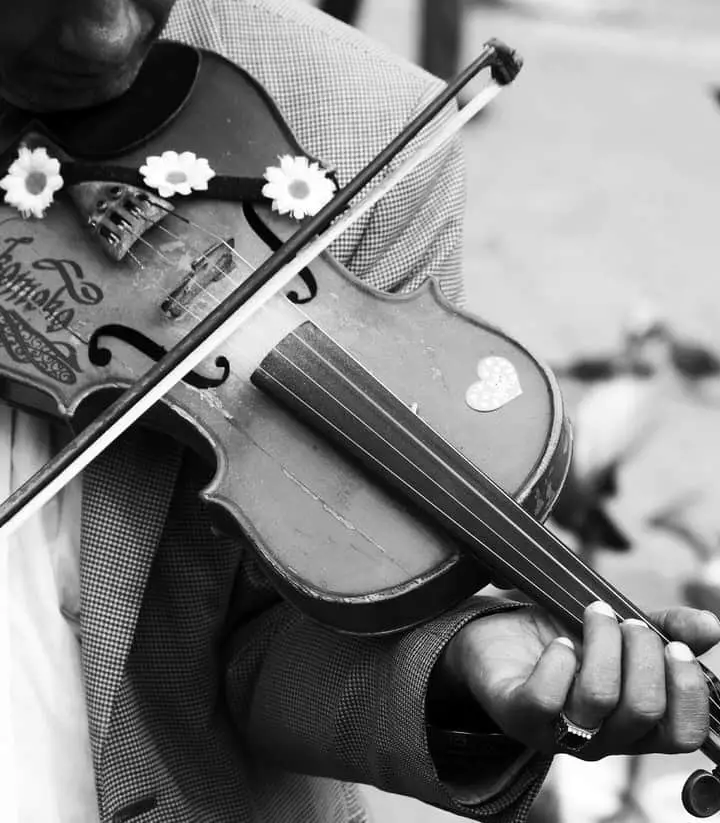
What’s the Difference between a Violin and a Fiddle?
The main difference is about twenty years of training and no one minds if you spill beer on a fiddle. Kidding aside, though, the two instruments are actually the same thing despite how radically different their musical associations are. Surely there’s some kind of difference for there to be such a distinction though, right? Well,…
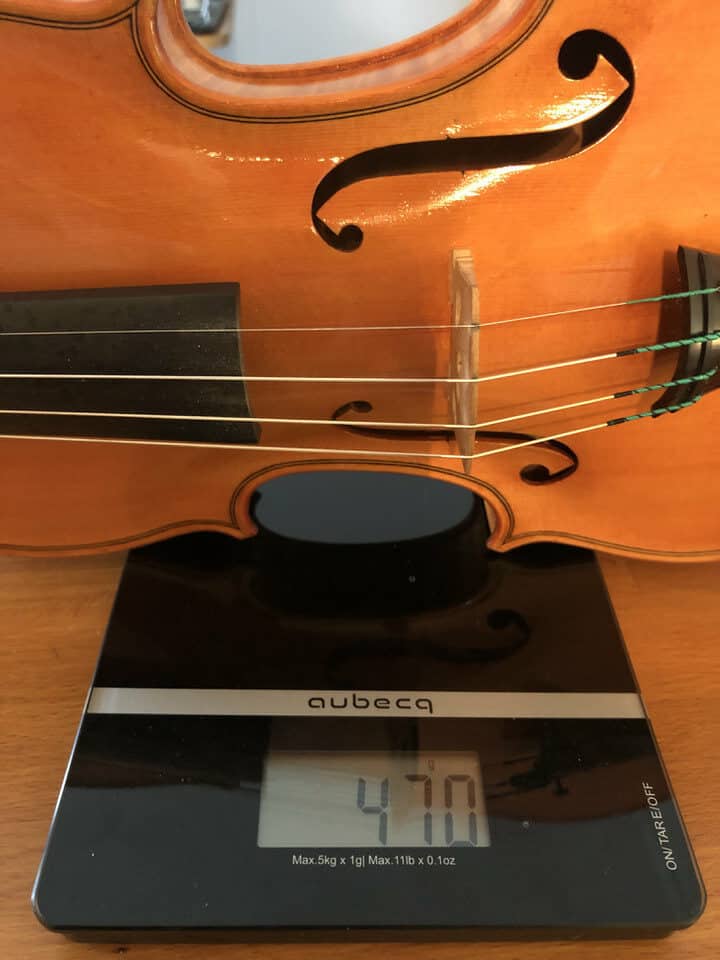
How Much Does a Violin Weigh? With a great table in g and lb
When considering the weight of a violin, one must appreciate that it is not just a matter of how heavy the instrument is, but how this weight affects playability, sound quality, and the physical demands on the musician. The violin is a delicate balance of craftsmanship and ergonomics, evolving through centuries to deliver sound that…
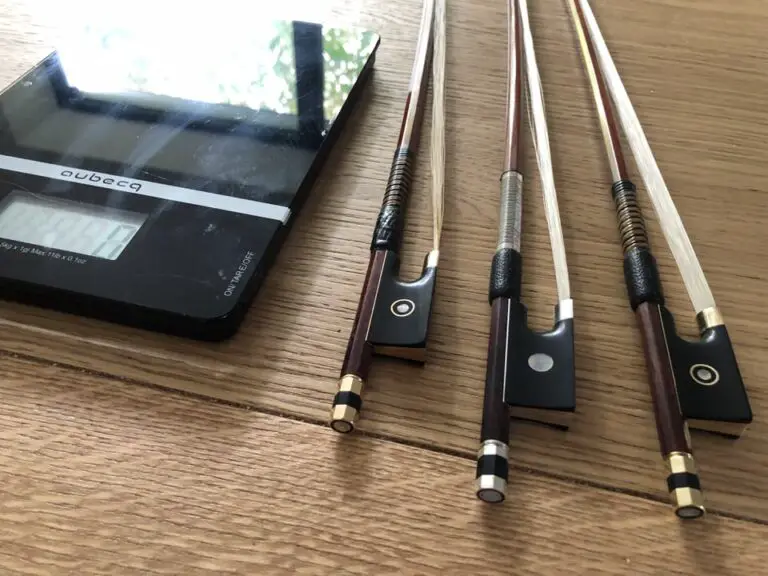
How Much Does a Violin Bow Weigh? Is heavy good?
For the untrained eye, a violin bow may appear as a mere accessory to the main instrument. However, for a musician, understanding the intricacies of a bow is as fundamental as mastering the violin itself. One of the critical parameters is the bow’s weight, which, more than its length, plays a pivotal role in shaping…
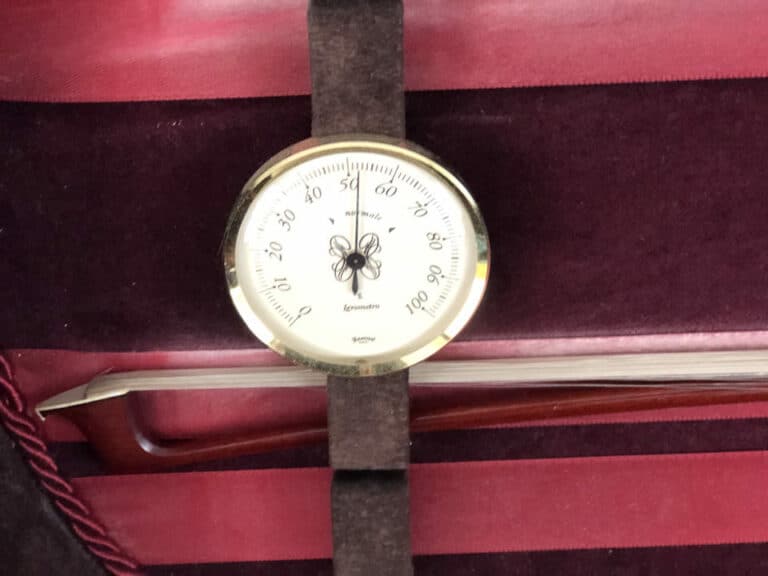
How to Store a Violin Bow? Don’t Make these Mistakes
The bow is made out of wood, hair (horsetail hair), and the frog is mainly made out of ebony. The wooden stick is delicately cambered with heat. So, what do we have to preserve when we store our bow? You need to preserve the wood and camber of your bow, as the hair will likely…
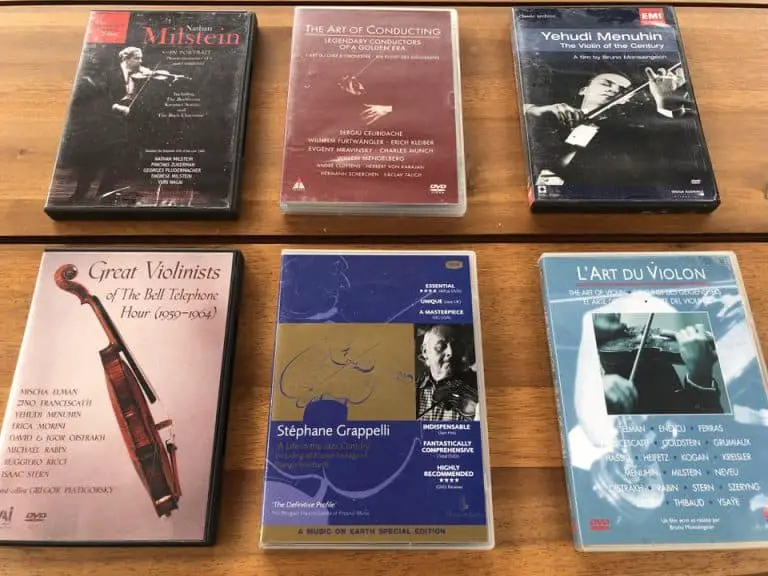
Best Films about the Violin: the films you can’t live without
These are the films that I found most interesting about playing the violin and music in general. I recommend watching them and being inspired by them for any serious student, whether beginner or intermediate. The Art of Violin Nathan Milstein: In portrait Yehudi Menuhin: The violin of the century The Soviet Violin School The Art…
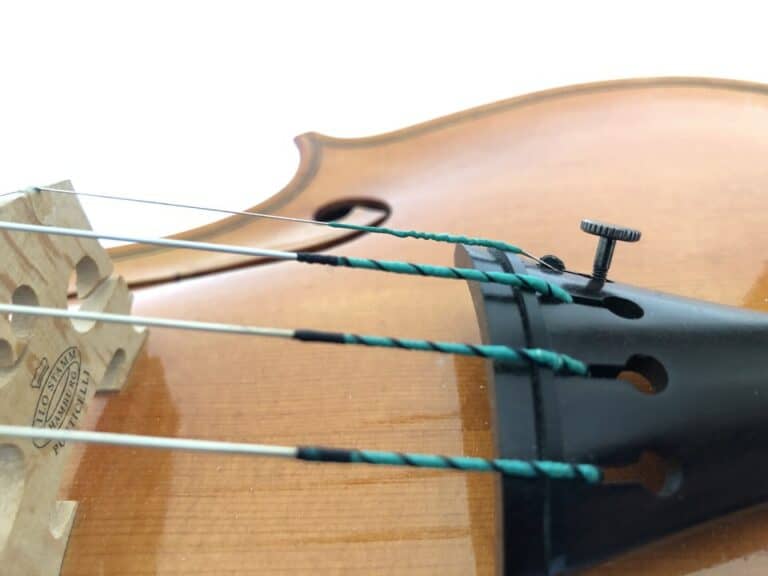
Where are Violin Strings Attached? (With Pictures)
Make sure your read further the article on the parts on the violin: a detailed blog post on the violin anatomy with pictures. The violin is a light instrument: it only weighs 470 grams (16.5 oz). But despite its lightness, it can hold up a great deal of tension. The cumulative pressure of the strings…

How to Travel with Your Violin: Tips for Worry-Free International Travel
In this blog post, we will share some tips on how to travel with your violin safely and without any stress!
Travelling with your violin can be a nerve-wracking experience, especially if it's your first time. You worry about whether or not your instrument will make it to the destination in one piece, and you fret over how you're going to get it through airport security.
Preparing your instrument for transit
Before packing your violin for travel, you will need to take a few precautions to make sure it is ready for the journey. The first thing you need to do is loosen the strings. This will help to prevent them from becoming too tight during transit and will help to keep the instrument in good condition. Finally, you should wrap your violin in a soft cloth or case to protect it from bumps and scratches.
Carrying your violin on an airplane
When flying with your violin, you will need to take it as a carry-on item. This means that you will need to have a seat for your instrument. You can purchase a ticket for your violin or rent a seat from an airline. If you are renting a seat, be sure to bring along a soft case or gig bag to protect your instrument during the flight.
Going through airport security with your violin
When going through airport security with your violin, you will need to remove it from its case and place it on the X-ray belt. You should also remove any accessories, such as rosin, from your carry-on bag. These items will need to be placed in a separate bin for X-ray screening. Finally, you will need to step through the metal detector with your violin in hand.
What to do if your violin is damaged during transit
If your violin is damaged during transit, you will need to take it to a local luthier to have it repaired. Be sure to keep all receipts and documentation, as you may be able to file an insurance claim.
What to do if your violin is lost or stolen
If your violin is lost or stolen, you will need to contact the airline or transportation company immediately. You should also file a police report and contact your insurance company.
By following these tips, you can be sure that you are prepared for any problems that may occur while traveling with your violin. With a little bit of planning, you can ensure that your trip is worry-free!
About the Author
Pedro Silva is a cellist and one of the co-founders of Myluthier.co. He graduated from the Royal Academy of Music in 2018 with a Master of Arts in cello performance, studying with Guy Johnston. He enjoys an varied freelance career as an orchestral, chamber musician and frequently collaborates with Early Music ensembles and West End productions.

Heritage by MyLuthier
Rare antique instruments, representing both historical significance and unparalleled craftsmanship.

The violin is an expensive, rather delicate instrument. Therefore, it’s important for beginners to understand basic instrument care tips and techniques that will maintain both its beauty and its sound quality.
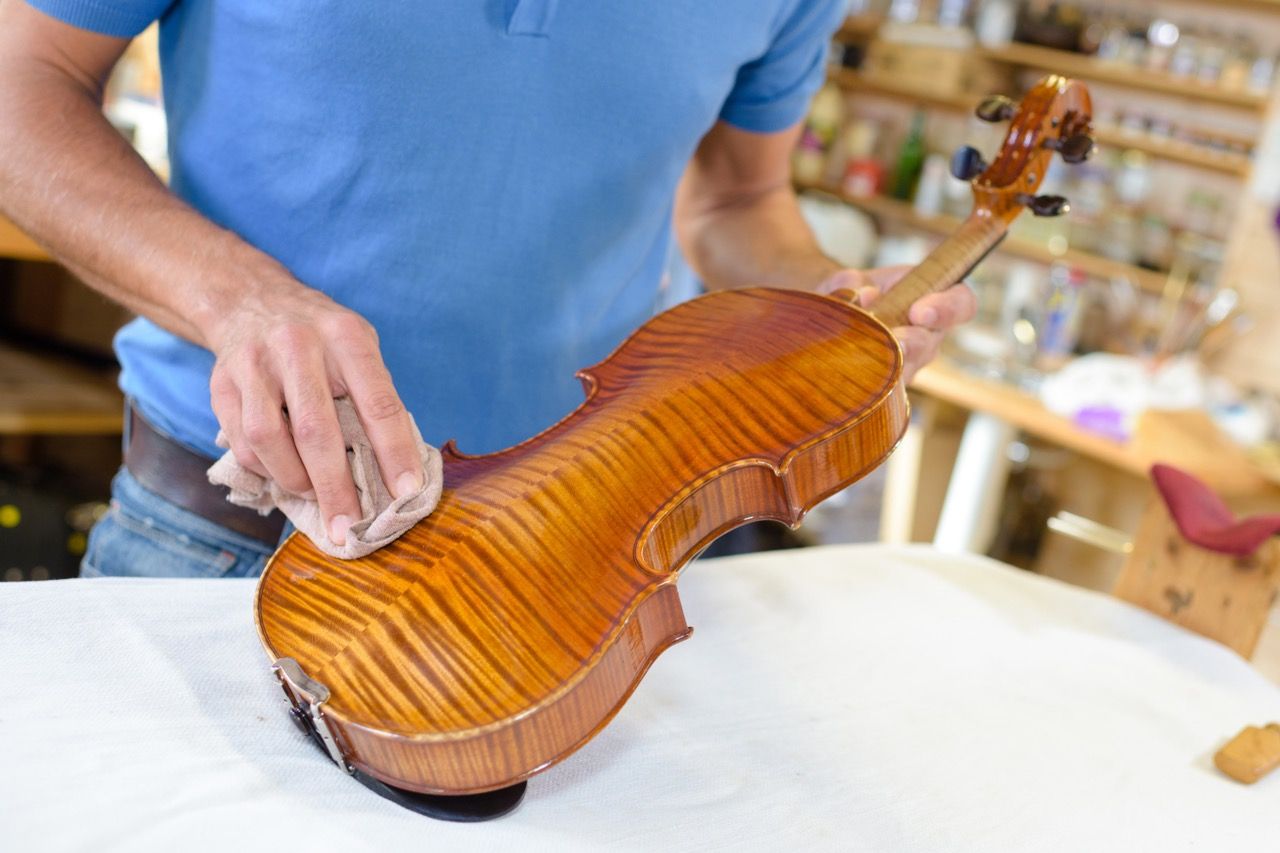
A violin auction can be a great way to find a good violin at a reasonable price. But, before heading down that path, there are some things you need to know about auctions in general and violin auctions specifically.

“How much should I spend on a violin?” At MyLuthier this is one of the most frequently asked questions, but confusingly the cost of a stringed instrument can range anywhere between £100 – £10million.


A Musician’s Tips for Traveling with Your Violin

Traveling any distance with your violin could lead to damage if your instrument isn’t properly packed and cared for along the way. So should you leave it behind? No way!
Whether you’re traveling over the hills and through the woods to grandmother’s house or just around the corner for a gathering with old friends, you can use these tips to make sure your violin and bow arrive at your destination undamaged and ready for a song.
Learn how to travel with your instrument and pack your violin for air or road travel!
How to Travel with a Violin by Air

Check your insurance coverage.
Is your violin covered under your homeowners or renters insurance policy? It might be. Call your insurance company to check coverage and limitations. Surprises and accidents are just as likely on local trips as on international ones! You can also purchase an independent violin insurance policy that covers everything from accidental damage to theft.

Leave your bow at home if it is made with ivory or tortoise shell.
Your bow could be confiscated at the airport if it contains ivory or tortoiseshell, as these are banned materials. If you must travel with a bow featuring ivory or tortoiseshell, apply for a CITES (Convention on International Trade in Endangered Species) certificate. A CITES certificate provides proof to customs that all materials from protected species used in the bow were either legally acquired or used at a time when the material was not yet protected. A CITES certificate is valid for three years.
On the flip side, a negative certificate or materials declaration from the bow’s manufacturer can serve a similar purpose in proving there are no materials on the bow from a protected species. Contact CodaBow for a materials declaration for any CodaBow violin bow .
What about Pernambuco bows? Traveling with a finished violin bow made from pernambuco wood is alright, reports the American Federation of Musicians . “You do not need documentation to travel with bows containing pernambuco wood as long as these instruments do not also contain ivory or other endangered species material.” The Federation recommends bookmarking or printing this letter from the U.S. government in case your TSA agent or airport official is unaware of this allowance for pernambuco wood bows.
Plan for extra security screening.
Allow time in your travel schedule for extra security screening. Assume that your violin case will be opened and inspected by a TSA agent (and that the agent may need to learn how to handle a violin and bow properly).
“Musical instruments transported as carry-on require a physical inspection at the security checkpoint. Inform the TSA officer if your instrument requires special care and handling,” reports TSA .
Invest in a sturdy violin case.
Avoid traveling with a soft-cover violin case that can’t bear much weight. You need a protective, durable, and weather-resistant case. Once you put your violin in an overhead bin, another airplane passenger could sling their suitcase into your instrument or place a heavy bag on top of it.
Check out these top violin cases for traveling from Great Violin Cases. No matter how sturdy your case is, you can also add padding to limit jostling. Just put a little bubble warp around the neck, bridge, fingerboard, tailpiece, and between the sides of the violin!
Loosen your violin strings and bow hairs.
Loosen your violin strings and bow hairs to avoid breakage. At flying altitude–even in a pressurized cabin–the tension in your violin strings can increase and damage the instrument’s body. This travel tip applies when traveling with any stringed instrument, not just a violin!
Buy a humidifier.
Airplane cabins are notoriously dry. You’ve felt the effects of it, too! The dry air dehydrates your skin and body, causing dry skin irritation, thirst, and headaches. Your violin can also “dry out,” fall out of tune, and crack.
With the help of a violin humidifier, your instrument can better maintain its integrity and be kept in the 45-55% humidity range. Violin humidifiers range in price from $10-$100. Consider removing the humidifier from the case once you reach your destination, especially if you’re traveling to a humid climate.
Note that changes in humidity aren’t as big of a deal if you have a carbon fiber bow as opposed to a wooden one . Humidity and temperature swings can change the camber of a wood bow, affecting the sound of your playing. A carbon fiber bow, however, is engineered to hold its shape no matter what.
Avoid putting your violin in checked baggage.
Sure, the plane’s baggage hold is pressurized and temperature controlled. One travel website reports that temperatures are held between 45-65℉. But your violin could be thrown about and damaged by baggage handlers along the way, and violins are genuinely happiest in the 60-70℉ temperature range .
Check-in early, and don’t be the last one on the plane.
This tip is crucial for musicians traveling on Southwest, where the seating is first come, first served in designated groups. Airline staff could start checking or moving bags to the cargo hold as overhead compartments fill up. You don’t want your instrument case to find its way down there, and you don’t want to make another passenger check their luggage because you were the last one to board, and now there’s no room for your violin case in an overhead bin. Board as early as possible and pay attention to your nearest overhead compartment.
How to Travel with a Violin by Car

Driving with your violin is much easier than flying! You control almost every aspect of your trip, from temperature to luggage setup.
- Similarly to flying with your violin, loosen the strings and bow hairs before hitting the road to prevent expansion and contraction damage.
- Don’t put your instrument in the trunk where it could get jostled about or crushed by other luggage.
- Go with a durable, weather-resistant case.
- Don’t leave your instrument in the car overnight. Consider taking it with you when leaving the vehicle if the A/C or heat will be off for more than 30 minutes.
- Again, check your insurance coverage!
Is Your Violin Ready to Travel?
With the proper preparation and care, your violin can fly or drive with you to any destination. Carbon fiber violin bows are especially well-suited for the rigors of travel and fluctuating temperature and humidity levels. Upgrade your bow (right alongside your violin case!) to one that’s more durable and reliable than your average violin bow. Request an at-home trial of a carbon fiber bow today, and get ready to pack your bags. CodaBow is there for you with some of the most durable and highest-quality violin bows. Feel free to sign up on our email list for additional information for top orchestral instrument traveling tips.
Fill out the form below to get the download and learn more!
Since pioneering the original carbon fiber bow, CodaBow’s master makers and leading scientists have created award-winning bows for players of every style, station, and aspiration. Generations of players throughout the world trust their performance to CodaBow.
Search In-Home Trial Register Your Bow Contact Us Warranty Information Policy Careers
Stay Connected
© 2024 Codabow
- create New 'Secondary' Menu
Home Violin Blog Violin Practice Practice Strategies How to Practice the Violin to Bring the Best Out of You
How to Practice the Violin to Bring the Best Out of You

Learn how practicing the violin can be done effectively.
For players of any instrument, effective practice has many components. From the structure of your practice through techniques, identifying problems, to what state of mind you’re in. We all know that playing the violin is a complex and difficult pursuit. Which is also what makes it worthwhile. You’d think the more time you dedicate to it the more you will get out of it, and that is true to some extent. However, the quality of your violin practice is not simply the number of hours, but how deliberate you can make it. Identify where you need to improve and find systematic ways of changing things. I hope that my article will help you with it.
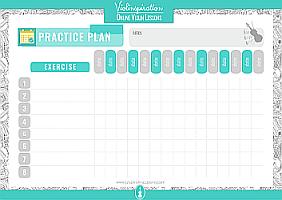
Fillable Practice Plan [PDF]
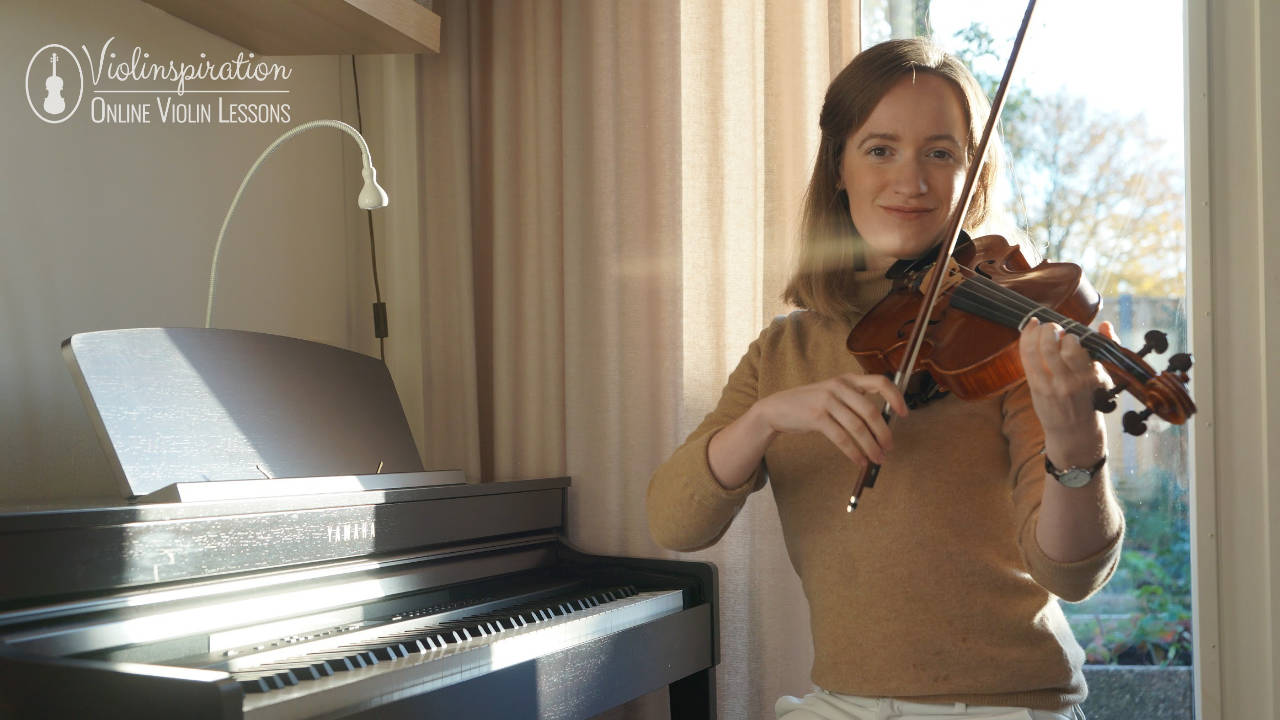
How to Practice Violin?
The single most important thing is to practice violin deliberately. Pay attention to where you need improvement and find how to adjust what you’re doing. Your violin practice should be structured with attention to learning step-by-step. The best would be to practice every day, even for a short amount of time.
Also, you need to develop good habits which take time, so be patient with yourself. Below you will find a list of good habits that people have found useful.
To make sure you get off to a good start, nothing will replace a good teacher. Be it in person or online , their technical know-how is exactly what a student aspiring to make good progress needs. Having said that, there is a lot you can learn on your own by using my free Video Lessons library and the resources you can find in the other articles on my blog .
12 Good Practice Habits to Get Better at Playing Violin
I’ve gathered for you 12 good practice habits and I talk about the best 5 of them in the video below:
1. Practice Every Day
To get the biggest benefit, regularity is more important than the length of time. It builds up your skills gradually, allowing time for things to settle before adding new things.
How to practice the violin consistently? I answer this question in the video below:
2. Structure Your Session
This way you will have a balanced violin practice that includes all the things you need.
3. Check That Your Posture and Bow Hold Are Correct
Do this before you start to play and again during the practice session. Use a music stand, so you can maintain a correct posture. Looking in a mirror from time to time can also help.
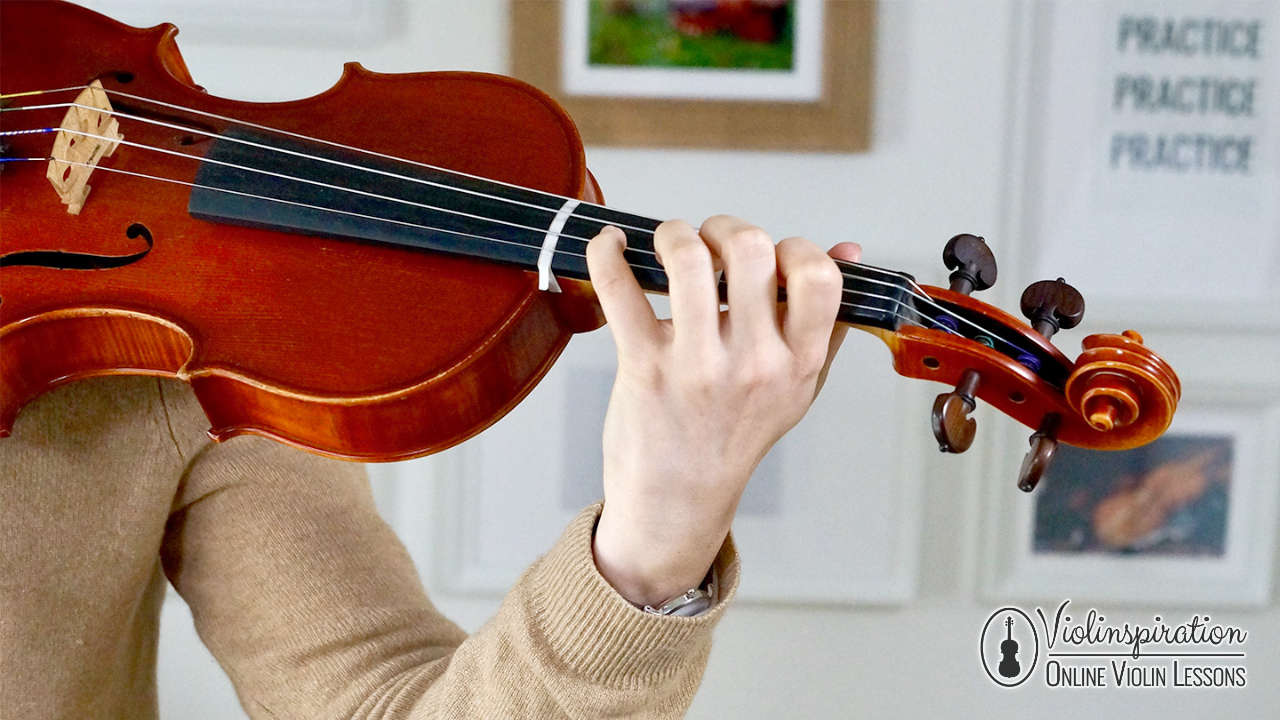
4. Be Deliberate
Have a clear intention of what you will be focusing on, for example, intonation or string crossings. Find the specific problems you are having and solve them.
5. Play Slowly and Quietly and Keep a Steady Tempo
Give your brain and body time to notice things and absorb new movements. Extremely slow practice is vital at all stages of your learning. Remember not to speed up at easier parts.
6. Break Things Down to Smaller Chunks
This way you can get clarity on them. Make it simpler and build up the complexity step by step.
7. Pick Good Fingerings and Bowings, and Stick to Them
Once you have mastered one way of playing, you can change the fingerings, maybe also find an easier way to play a certain part, and re-learn the piece that way. This will increase your versatility and knowledge of the piece.
8. Repeat the Correct Version Many More Times than You Did the Wrong Version
When you are not getting something and you keep trying, don’t stop the moment you got it right. Because if you do, you will have repeated the wrong thing many times and the right thing only once.
9. Use a Metronome
The metronome will give you a clear sense of the proportions of the notes, sometimes they are much longer than we expect. It will also ingrain playing the piece at a steady tempo and not speeding up.
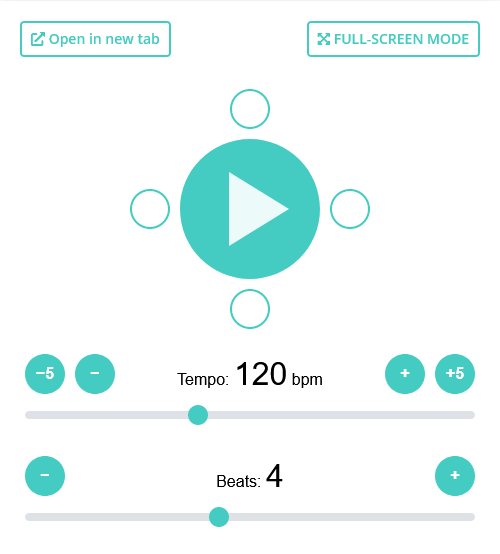

10. Play With Ease
Sometimes focusing too much on the technique we end up trying too hard and create tension. Feel into your body to locate any grasping, and see if you can let go of these and play the same passage with more ease.
11. Be Musical and Listen to the Sound You’re Making
Violin playing is about making music. It is never too early to play musically, rather than simply focusing on technique. Pay attention to what the character of the piece is, what emotions it is conveying, what style of music it is. What do you want it to sound like? Try playing it in different ways, and explore what could express particular emotions. Play it in ways you would never perform it, just to see what effect it has.
Recording yourself and listening to this can also give you ideas about where and what to change.
12. Have Fun!
This is perhaps the most important thing. Enjoy yourself!
Planning the Practice Session
These three aspects will help you organize yourself.
Planning the Space
Create a clean and organized environment to play in. Give yourself the space to be undisturbed and unrushed as much as possible. It’s hard to get into something fully when there are other matters pressing on your mind. Have few other things around than your music stand , sheet music , metronome , and violin.
Planning the Time
Find the best times for you to have your session or sessions. Figure out at what time of the day you can practice and what is the optimal length of the session for you. Some studies have also found that breaking up a practice session aids absorption of the material, for example practicing intensely for ten minutes, then taking a few minutes to do something else, and then going back to practice, and so on. Or consider breaking up one hour-long session into two shorter ones.
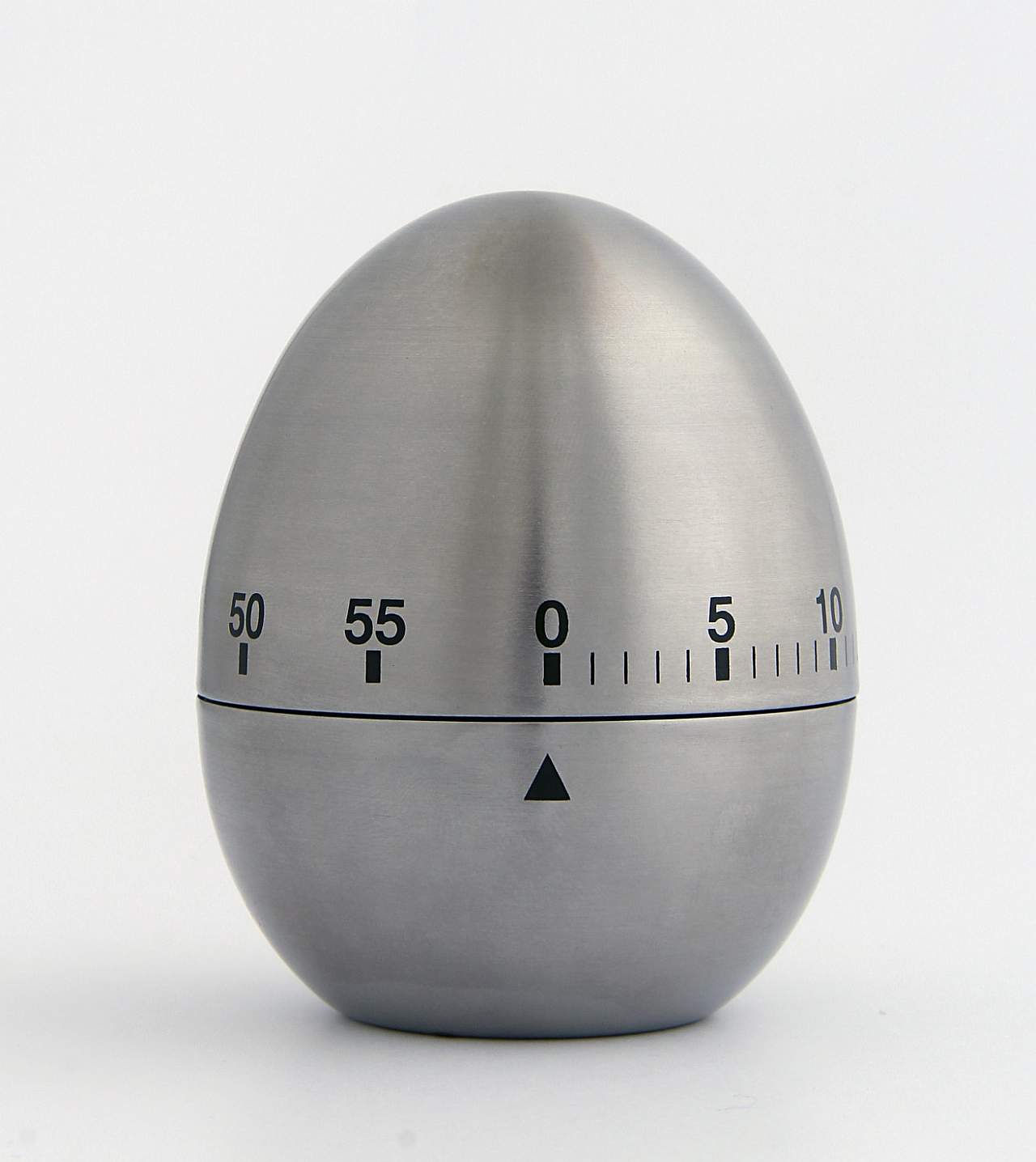
TIP: You can use the egg timer or an online tool like cockoo.com to count down the practice sessions and breaks time.
Planning the Structure
Before each session, list the scales, studies, and pieces you will work on. Then allocate how much time you’ll spend on each, and if you need to, use a timer to roughly stick to the plan. There is no need to put pressure on yourself about all of this, the aim is to create a container that your practice can rest on. Make it support rather than pressurize you. Plan clearly what you want to achieve in each session.
If you would like a printable copy of a practice plan to keep track of your practice habits, enjoy a free download here:
What is a Good Practice Routine?
A good practice routine is organized, to the point, and focused on the issues that need resolving. The exact length of a practice session, as well as the exercises and pieces, should always be adjusted to your level of playing. Such an approach will give you joy let you be yourself.
Practice Routine for an Absolute Beginner
Start with a session of around 15 minutes at the same time each day. Pick something to focus on, no more than three things. For example, you could choose to practice your bow hold . Find a few different exercises on this one thing and play around with them. Be creative and make it fun. When you feel done with this for the moment, pick another thing, say it is string crossing . Then, find a few different ways to work on this and spend some time just doing that.
Practice Routine for Beginner to Intermediate Level
You may practice for half of an hour or a whole hour, depending on how much time you have. I find it good practice to break up my practice sessions into three parts, easy, difficult, and easy. This way I get a chance to warm up , then work on something at the edge of my ability, and then come away feeling I can do this. Within this, you can include both pieces, etudes , other studies , and scales . It doesn’t have to be everything every day, but through the week it’s important to get a chance to work on all of those exercises.
Practice Routine for Advanced Players
You can be much more rigorous with your structure, and want to include more of the things that you find hard. Aim to work at that fine line where you can still do something, yet it’s taking you beyond where you’ve been before. If you have time for an hour-long practice , start with something easy to warm up, like a piece you’re very good at already or some easy scales . This could take a few minutes, just to get into the swing of it. Once you feel ready to start, you could spend a quarter to a third of your session on studies or e.g. 3-octave scales , then get into the piece(s) you’re learning, and spend around ten minutes at the end playing something you love and enjoy. This is so you can wind down, and finish feeling confident. Make sure the last thing is not the hardest thing you’re working on.
Practice Journal
To help you keep track of your progress, you can keep each day’s plan in a book, where you can put a tick next to the things you did manage to do. Some find this encouraging and it provides a sense of accomplishment.
I can sometimes be overly critical of myself and don’t appreciate just how much I have done in a day. Having a list of everything I did do can be good to look at to acknowledge my achievements.
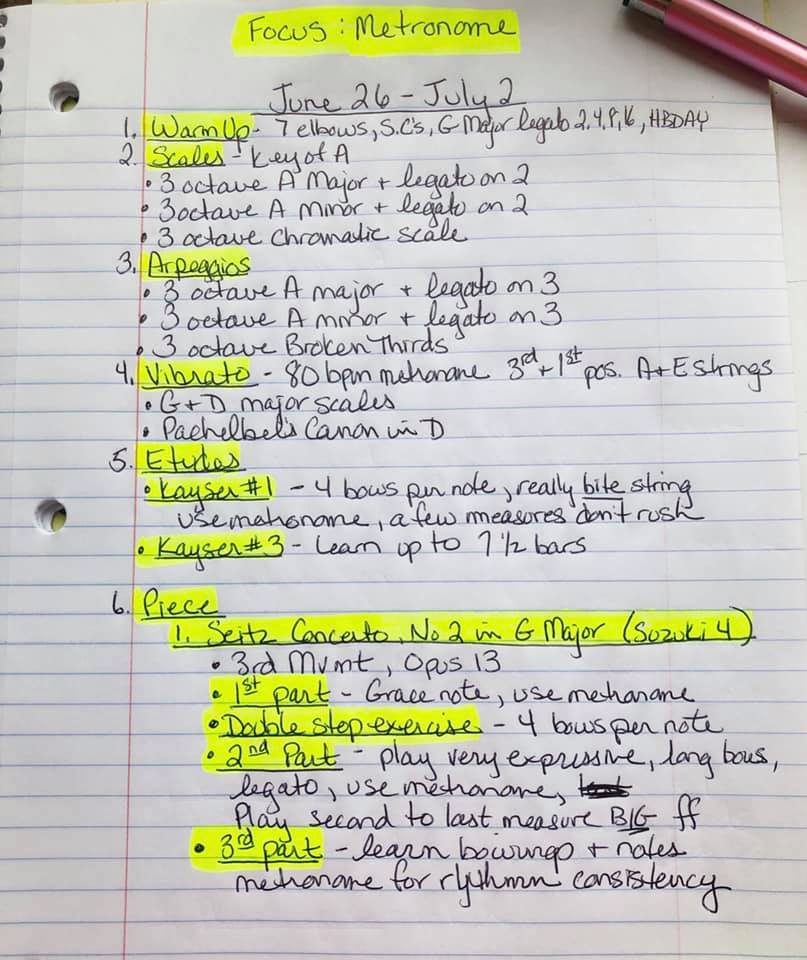
Violin Practice Resources
With the right practice resources, you will have fun while playing the violin, and also you will progress more quickly. There are various books dedicated to studying violin with pieces, scales, and other exercises. I published an overview of 18 books which you can find on this link . If you prefer a video tutorial, head on to my Video Lesson library, where you can find many popular songs to learn.
A lot of classical pieces are now in the public domain, so you can download them for free. Click here to check out my post with a choice of pieces for all levels, also for duets, and download them for free. If you feel ready for practicing a concerto, you may like my blog post “Top 10 Intermediate Violin Concertos” .
You may also want to learn very specific skills like bowing techniques , the third or fifth position.
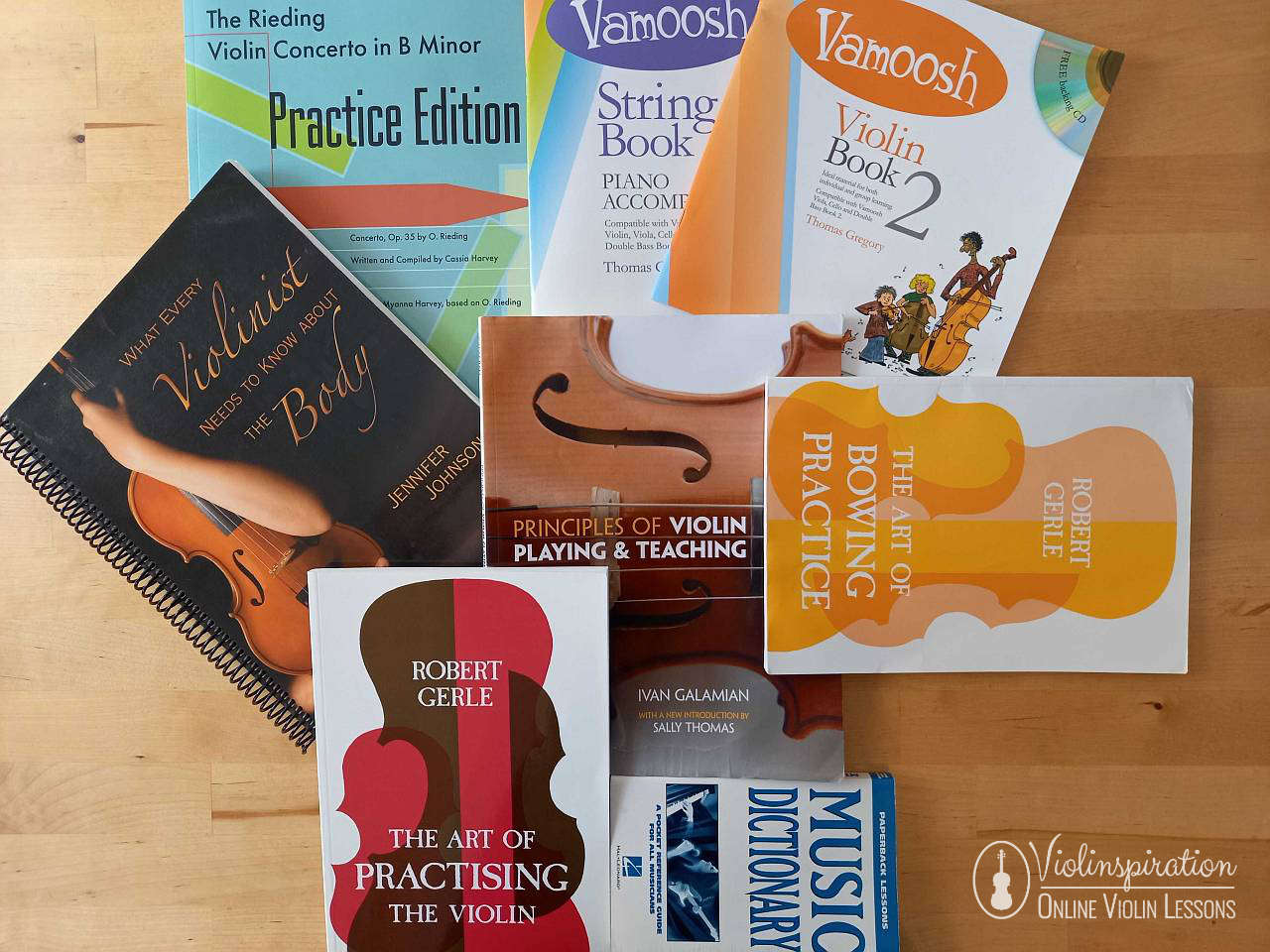
What is the next skill you would like to learn? Please let me know in the comments below!
How Much Should You Practice Violin?
Your violin practice session should be adjusted to your current level and the progress you would like to make. The length of a practice session may vary from 15 minutes, half of an hour to an hour, or even more.
The exact answer depends also on:
- How much time do you have after work and other commitments
- How important this is to you
- What practice time you are used to.
Around 15 Minutes
If you’re a complete beginner you need to give your body a chance to get accustomed to all these new movements. Also, the skin on your fingers will at first get hard and calloused, so don’t overdo it. You don’t need to make them bleed. This amount of time will not lead to fast progress.
If you are extremely busy and have just 5 minutes for practice a day, it’s also fine! In the video below I explain how to structure such a short practice session:
30 – 40 Minutes
Once your body has become comfortable and your fingers are no longer calloused, you can increase your practice time gradually, and have a longer session. The slightly longer time will help you make a little more progress, and this will be sufficient for a beginner to intermediate-level player.
One hour will give you enough time to make good progress, as long as your violin practice is deliberate, effective, and not simply a mindless repetition of things.
If you’re an advanced player and want to make real progress, you can do 1.5 to 2 or more hours a day. However, several famous violinists such as Perlman or Heifetz were against a very long practice time. More than 3 hours a day is probably not necessary. Remember, the effectiveness of your practice is not simply the number of hours.
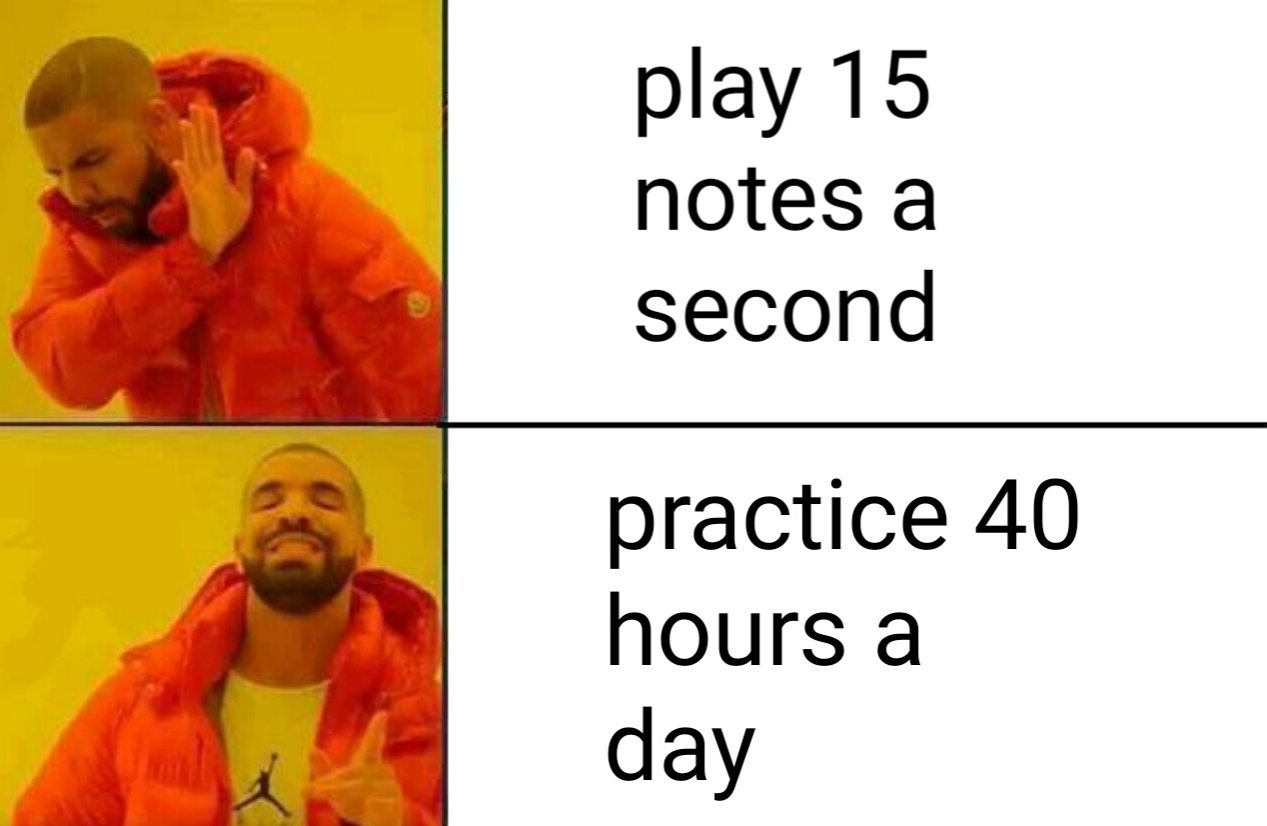
How Do Beginners Practice Violin?
As a beginner, it is important to develop good habits: proper posture, bow hold, the shape of the left hand. You want to get used to how the arms move and feel, and how your whole body holds itself. Playing with exercises focusing on each of these separately will be very beneficial.
For a good beginner routine I suggest the following:
- Tune your violin
- Play a few scales
- Play through your main piece
- Find the difficult sections and mark them for future reference
- Work on one hard section with a clear intent on what you are aiming to improve
- Play through the piece again
- Play something easy
If you don’t know what to focus on, you can always pick one of the items listed above, such as posture, or simply play the same passage with more ease.
If you would like to follow a step-by-step practice plan adjusted to your level, I invite you to become a member of Julia’s Violin Academy .
When Should I Practice Violin?
In an ideal situation, you would have your practice session in the morning, as both the body and mind are most receptive to learning at that time. Whether that’s possible or not, playing violin at around the same time every day makes it easier to get into a routine.
How Can I Practice Violin Everyday?
You can practice violin every day by planning it in advance. With time, it will become your habit. Plan the time of your practice session, choose what you are going to practice and for how long, also decrease as much as possible things that may distract you.
The body likes routine and doesn’t like change. So at first it may take a little effort to create the habit. I find it useful whenever I am about to do something, not to just jump into it but say to myself ‘I’m going to do this in ten minutes. This gives my system time to get used to the idea that I am going to do this. Usually, by the end of ten minutes, I can feel myself gearing up to do the thing I said I was going to do. After a week or two of consciously doing even a short practice around the same time every day, it will become one of those things you just do. Like brushing your teeth.
If your other commitments don’t allow you to play at the same time, it’s not the end of the world, do it when you can.
How Can I Practice Violin Without Disturbing Others?
For many of us disturbing others or being heard can be discouraging, so it’s vital that it gets addressed.
1. Find a Good Place
This could be in a room furthest from everyone else, or in a separate building if that’s possible.
2. Find a Good Time
If you live together with other people, or your neighbors can hear you when you play, there are still a few things you can do. Talk to them and find times when it would be least bothersome for them and try to fit your routine around this.
3. Soundproof
If this is feasible, consider soundproofing a room. Apart from professional soundproofing with e.g. foam panels , you can lower sound levels by using heavy curtains, or bookcases as barriers. Draftproofing cushions under the door can also help.
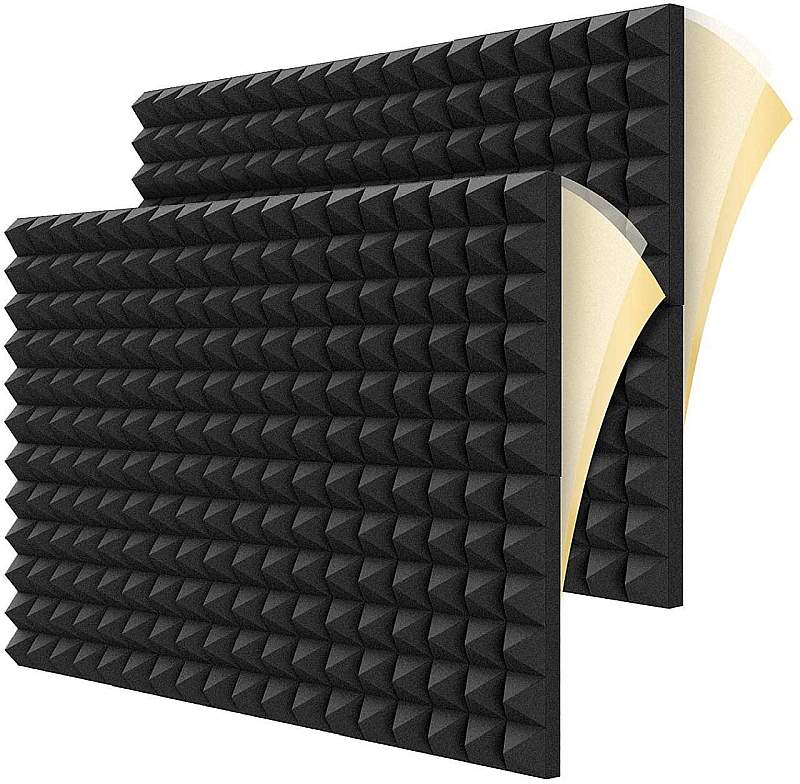
4. Use Practice Mute
Practice mutes are large and go over the whole of the bridge. They are not the small round rubber ones used while performing or playing in an orchestra. They come in rubber and metal versions, and the metal one is much more effective at reducing the volume.
These reduce the sound considerably, but not completely. They also muffle your violin, so don’t use them all the time.
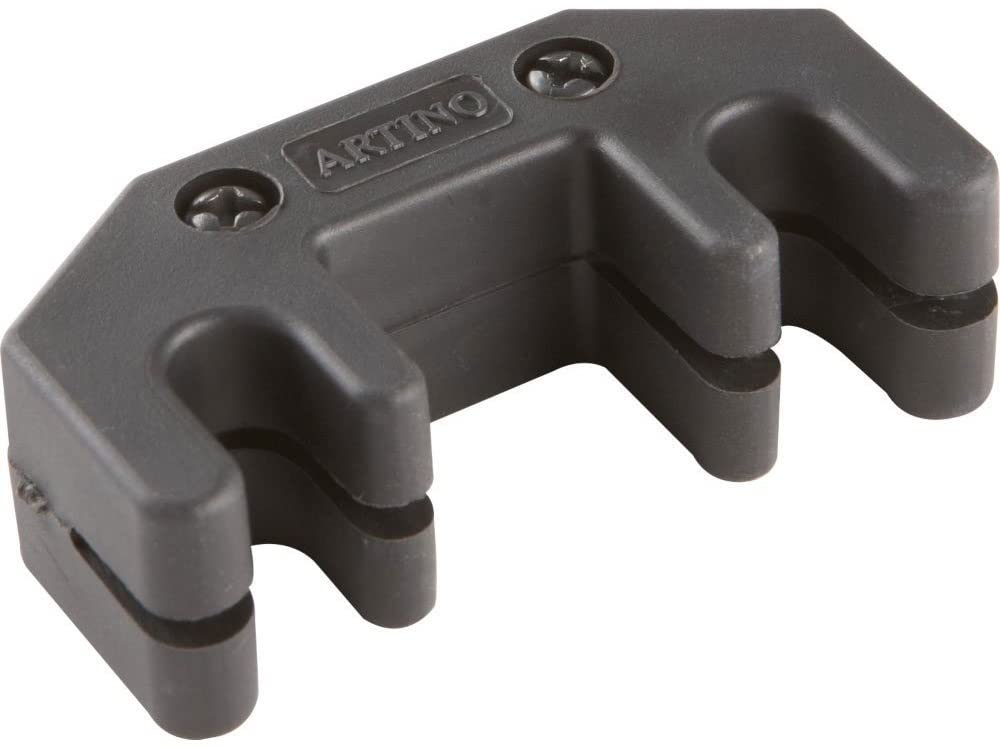
5. Choose Electric or a Silent Violin
Electric and silent violins are much quieter, though not completely silent either. The silent violin has the added benefit that you can hear yourself through headphones.

How to Practice Violin Without a Violin?
At times when you’re traveling on a train, or are away from your violin, it is possible to practice in your imagination. Close your eyes and feel yourself playing. The more real you can make this feel, the more it will actually create neuro-circuitry the same way an actual practice would. It does work.
There are other things you can do, like hearing the music in your mind and thinking about what voice you want to create. This way you can explore the musicality of the piece. I also talk about ways of practicing without a violin in the following video:
As you can see there are many things that make for good violin practice. It is therefore good to start with a few habits and add the others later. Take time to build things up. Start with the following:
- Create a structure for your practice
- Plan each session
- Keep track of your work and progress
- Start in small doses and increase gradually
- Be deliberate.
Now, download the practice plan, fill it out, and start practicing the violin right away!
What makes your practice session the most effective? Please comment below, I’d love to know!
Did you find my post useful? Useful Not Useful
KEEP ON READING...
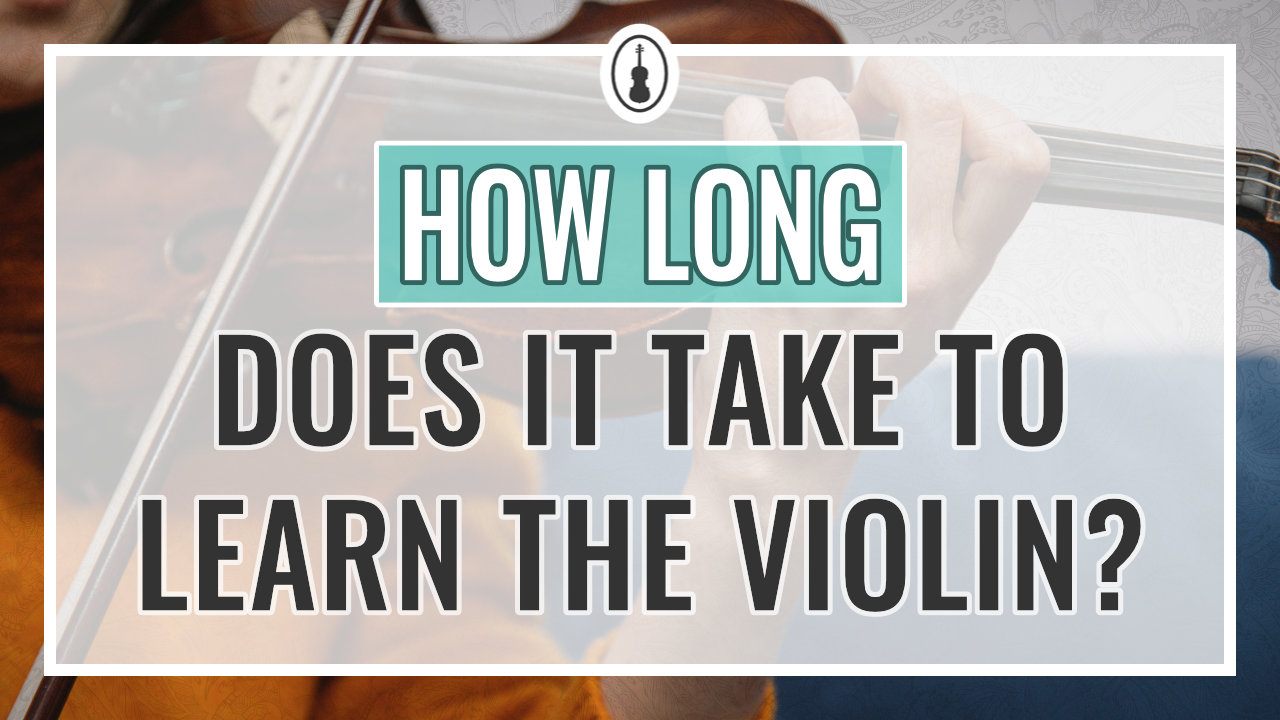
How Long Does It Take to Learn Violin?
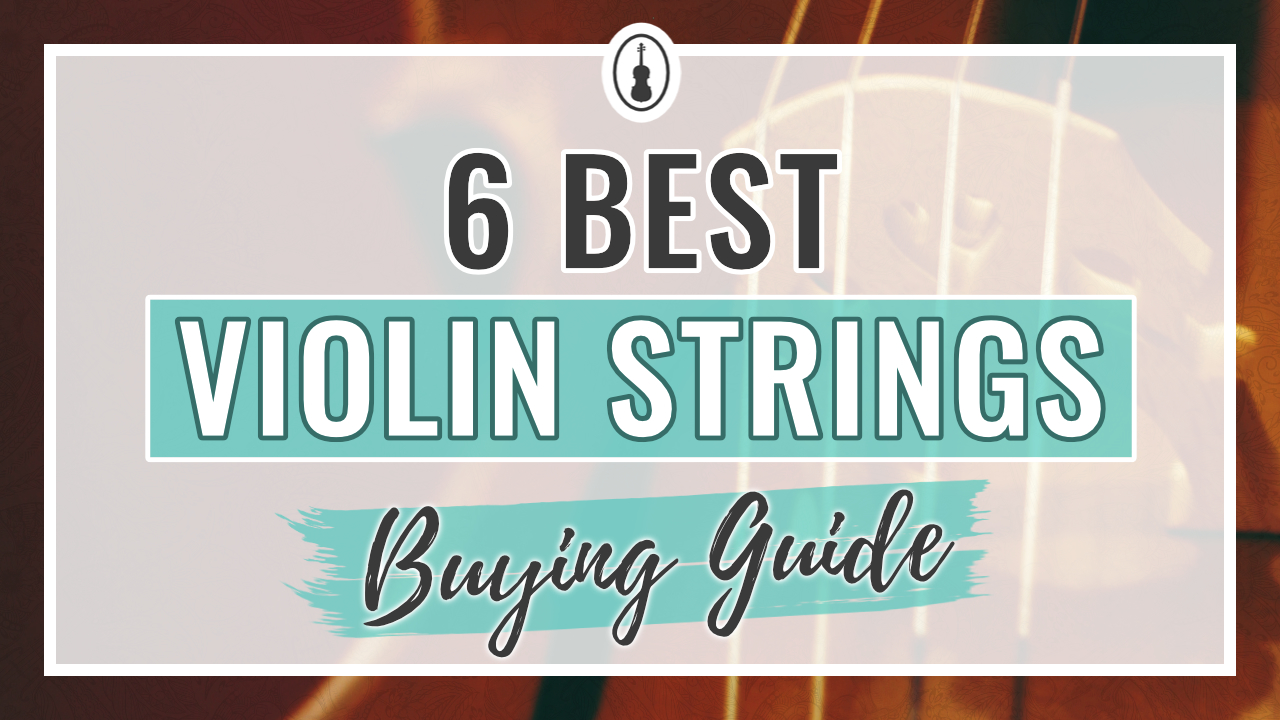
6 Best Violin Strings – Buying Guide
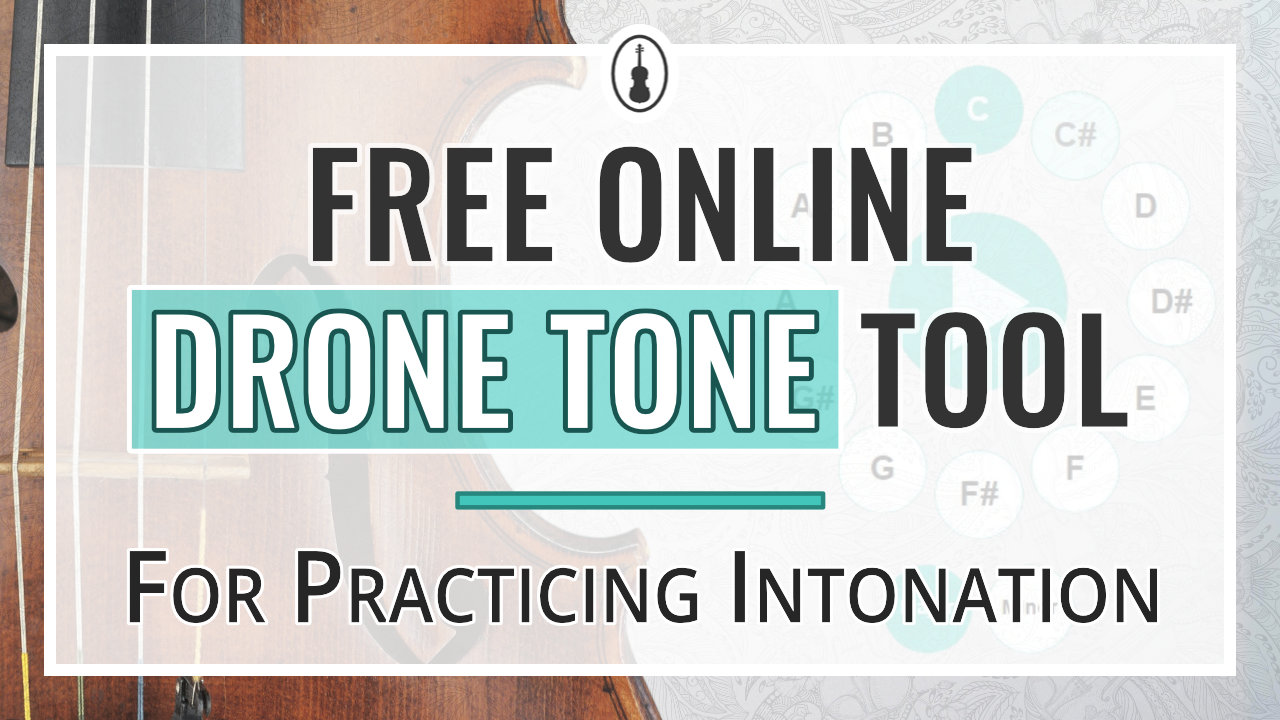
FREE Online Drone Tone Tool | Tuning Practice for Violin

The Fretted Violin: A Unique Instrument to Play!

Violin Bow Price: Options for All Levels

25 Best Violin Gifts in 2024 – For Violinists and Teachers

How Many Strings Does a Violin Have? Your Questions Answered

How to Mic a Violin at Home – Best Gear, Setup, and Tips
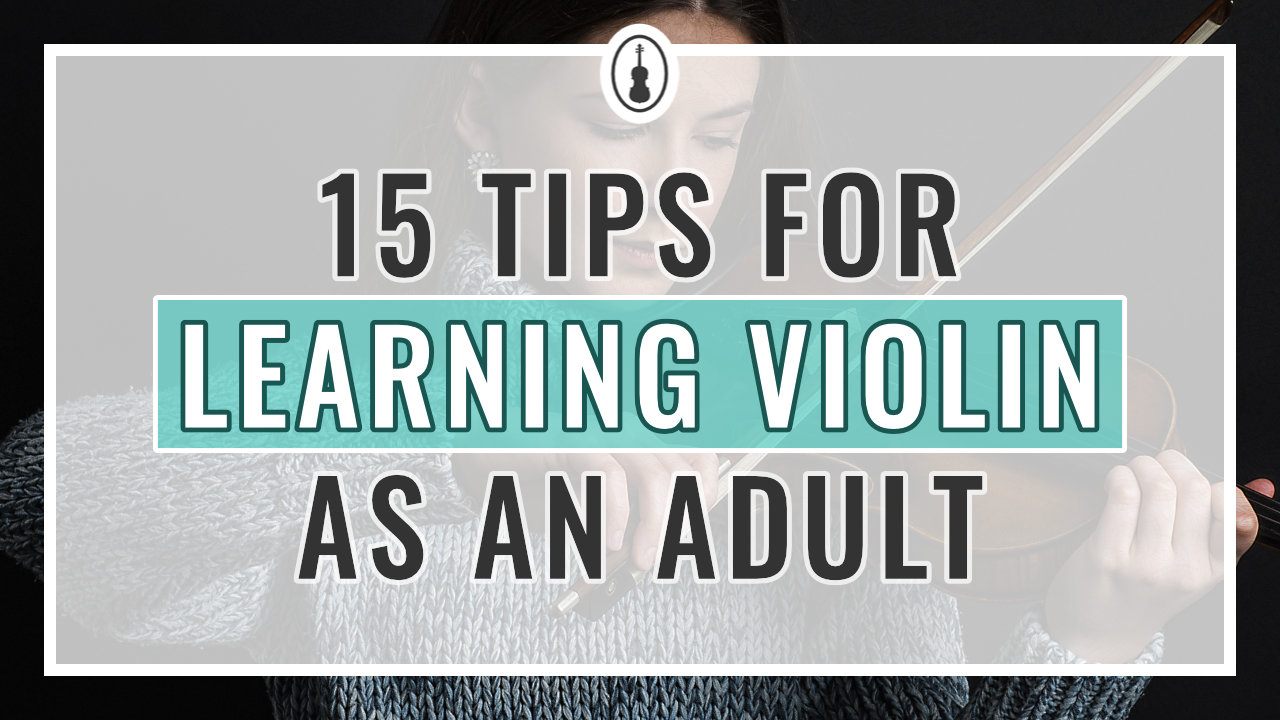
15 Tips for Learning Violin As An Adult in 2024
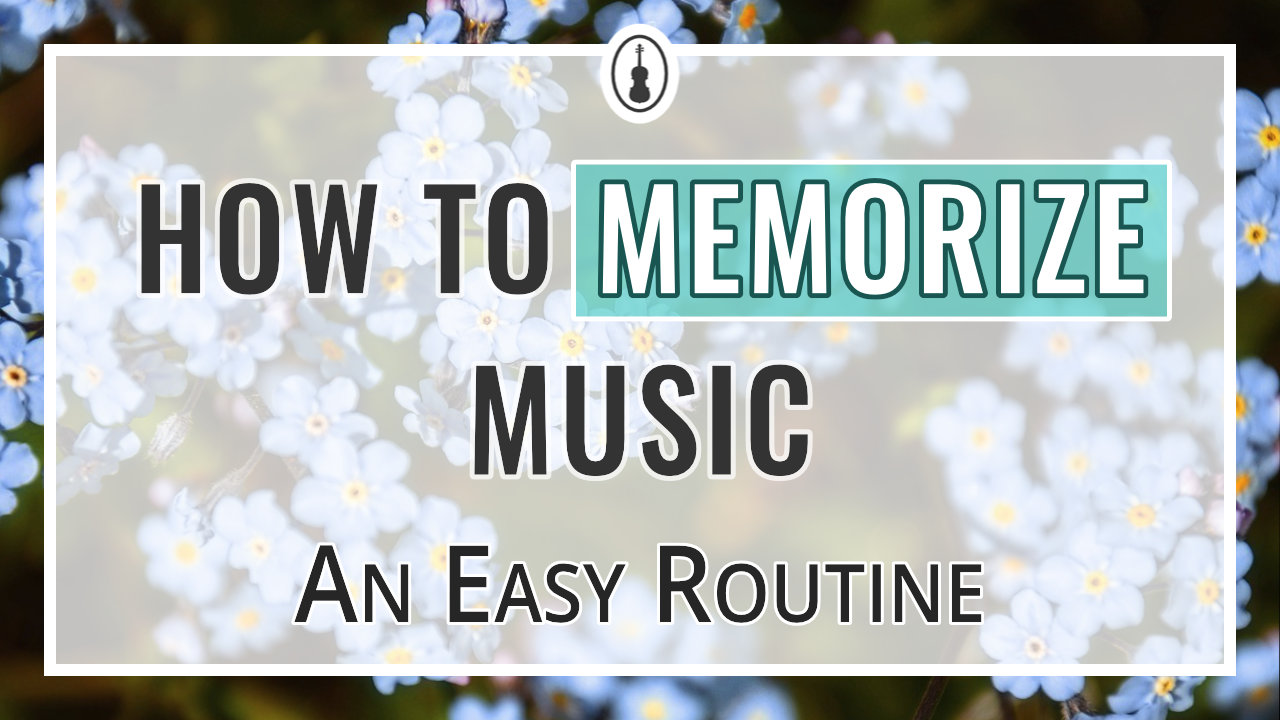
How to Memorize Music: An Easy Routine
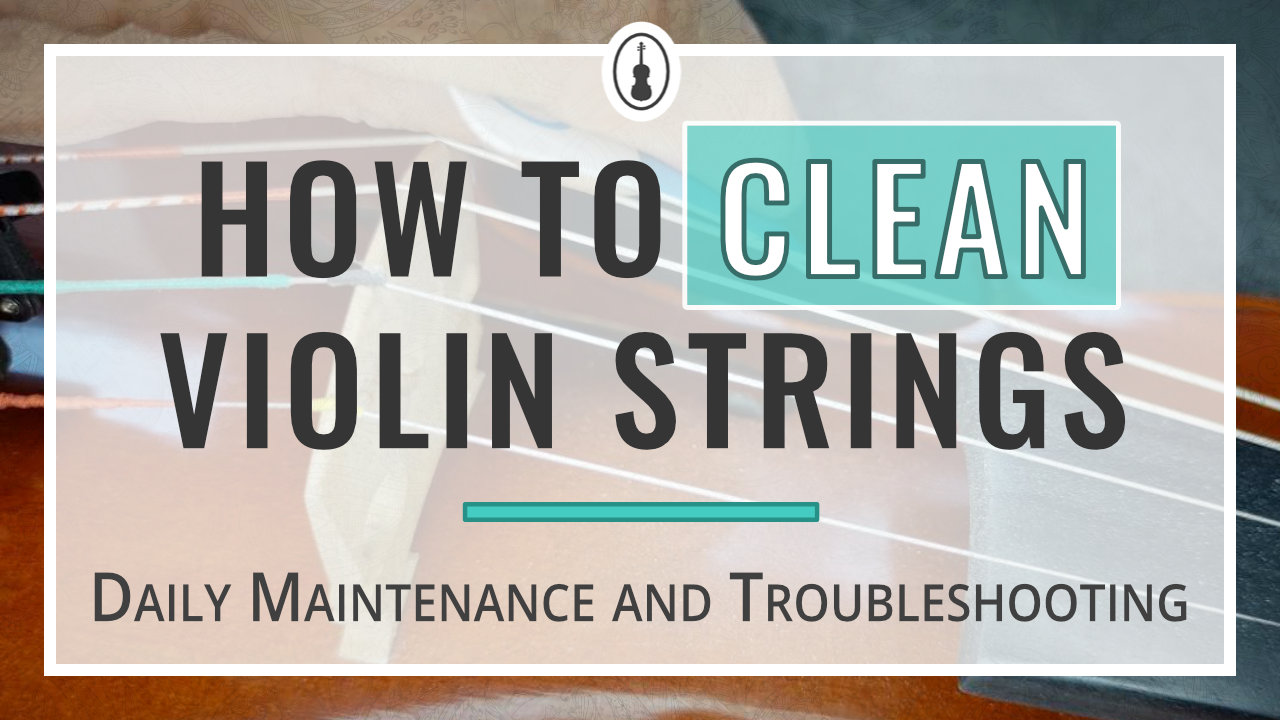
How to Clean Violin Strings: Daily Maintenance and Troubleshooting

The Kodály Method: An Easy Way of Learning Music and Rhythms
- Video Lessons
- How to Read Sheet Music
- Songbook for Beginner Violinists
Contact details
- Full Name *
Describe your request
- Your message *
Verification and sending
- This box is for spam protection - <strong>please leave it blank</strong>:
Flying with a Violin: Transport Your Musical Instrument Safely
by Editorial Staff Last Updated December 22, 2020
Editorial Staff
Our editorial staff consists of a multitude of talented people consisting of musicians, enthusiasts, and talented researchers and copywriters. Our goal? To help you, our readers, get the information you need in the best way possible.
Consordinis articles are written by musicians who independently research, test, and recommend the best instruments and products. We are reader-supported. When you purchase through links in our articles, we may earn an affiliate commission.
Every musician loves his instrument. There can be nothing more traumatizing for a musician than damaging his precious instrument.
And, if you play the violin and you are going somewhere that requires you to travel by air, it’s only normal that you want to continue creating music with your instrument.
However, a violin is an extremely delicate “music-making-machine” (just as how all the other stringed instruments are).
And, it is a grave risk that you are taking if you are planning to check it in with the very cold environment at the cargo section of the plane.
Also, you can never be sure that the baggage handlers won’t break it.

With this in mind, you’ll have to learn how to keep your instrument safe during transit and avoid any damage.
10 Tips and Tricks to Pack your Violin
It probably isn’t the greatest idea to just grab any box and stick a “fragile” note on it.
Keep in mind that in preparing to pack your most beloved violin, you must be equipped with the knowledge on how to do it:
1. Take a bow and wrap it
I am actually talking about your violin bow . It may be tempting to just let it stay inside the case with your violin, but to ensure added safety to your bow, an extra measure is needed. You have to:
- Get a separate bow case or a small PVC pipe slightly longer than your bow.
- Make sure to loosen the bow hair to prevent it from tightening during the travel period. If the bow hair becomes too tight, it might probably snap.
- Once it is loosened, pad both sides of the bow, or wrap it with packing material to prevent the bow from moving.
- Wrap the packed bow in PVC with bubble wrap .
- Place your PVC pipe or bow case into your violin case (if it fits) or inside your checked-in baggage.
2. Loosen the violin strings
While it is true that your violin case is a good protection , your violin will still be exposed to temperature changes.
Excess tension on the violin string may occur due to decreased humidity and fluctuating weather/temperature conditions.
Loosening the strings prevent the bridge from warping, as they are vulnerable and sensitive to temperature changes.
It can also prevent the strings from snapping because of the effect on the tautness of the string as a result of temperature changes.
To loosen your string:
Turn your tuning pegs to loosen the strings (not too much). You can do it by lowering the string a little or even a whole step lower . From sounding G, D, A, E, your violin string should sound F, C, G, and D.
3. Pack your violin with a hygrometer and a humidifier
What is a hygrometer?
Hygrometers are devices used to measure the moisture content of the atmosphere.
Ideal conditions for violins and other stringed-musical instruments are at 50–55% with relative humidity at 20°C.
Dryness (below 40%) involves greater risk as well as excessive humidity (over 70%).
Most violin hard cases come with a standard humidity gauge, but these hygrometers are usually not very accurate.
If you travel a lot and humidity is a major concern for you, I will recommend for you to buy a good-quality hygrometer or digital gauge.
Humidifiers
Wild swings in humidity and temperature can have an enormous effect on your violin’s performance – and sometimes on its structural integrity, most especially with antique instruments.
Prepping humidifiers and using it during your flight allows a controlled and continuous provision of moisture into your violin. This ensures optimum conditions to your violin.
As we have discussed, violins are vulnerable to the rapid changes in humidity and temperature fluctuations.
4. Turn the tuning pegs parallel to the scroll
Tuning pegs are extremely delicate and are easy to break. To decrease the risk of breaking, turn them parallel to the headstock or the scroll .
If you don’t want to, you can remove them and store them in your case’ inside pocket.
Just remember that by removing your pegs, the bridge gets less support so you can also remove it and keep it.
5. Use bubble wraps (and plenty of paddings!)
If you have bubble wraps or soft pads (or extra socks), you can ensure more protection for your violin.
You can put your paddings around the tuning pegs, under the fingerboard, and around the bridge, as they are your violin’s weak spots .
If space on your case permits, you can even wrap your violin with it. If you don’t like bubble wraps, you can get a small silk cloth or a silk bag to wrap your violin before placing it in the case.

Don’t use shredded paper or smaller packing materials for packing the violin. This stuff can fall through the f-holes of your violin and you’ll have a hard time taking them out.
6. Place the violin in a hard carrying case
First of all, if your violin costs more than $500 , it is best to consider investing on a hard case.
Even though the prices of hard cases are higher than the soft violin cases, hard cases merit the expense.
They guarantee you a safer place for your violin, rosin, mutes, tuners, and other violin accessories.
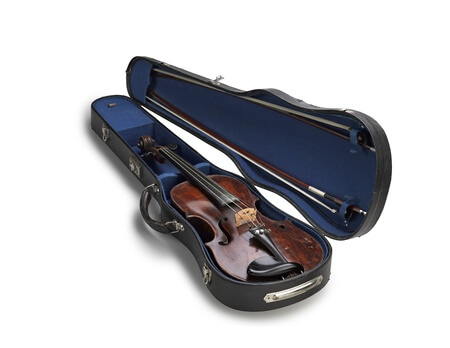
You can’t deny it but there are obvious benefits to having a hard violin case .
So, it is better for you to have one. If you still want to know why, consider these information below:
- Baggage handlers are always in a rush to pack the cargo, and sometimes they don’t heed any notes or “fragile stickers” on the baggage.
- Extreme humid environment and dry weather conditions are your violin’s worst enemy.
- Plane rides can be bumpy due to air turbulence.
Hard cases are like safety capsule that protects your violin while you are traveling.
7. Bring extra set of violin strings
Travelling on a plane is tricky. It poses real risks to your strings. Even if you followed all the safety tips in flying with your violin, strings still break.
It is best for you to bring an extra set of strings . There’s no harm for being sure just in case your string snaps anyway.
8. Purchase an instrument insurance policy
If your instrument costs you a fortune, you can get an insurance policy to cover your travel with your violin.
Most (if not all) airlines don’t pay for theft or damage to your instrument so being insured is essential.
If you have an existing insurance for your violin, be sure it is updated. You can contact your insurance provider about your policy for more details.
Remember, “Sometimes bad things just happen.” Insure your instrument.
9. Depend your violin
Whatever they say and do (as long as you know your rights), resist from staff taking your violin and putting it in the cargo section. Horror stories abound. Sad news exists.
Depend (but don’t argue), and ask mercy from the boarding team – beg and cry if necessary.
Weep heart-wrenching tears and don’t ever let them take your violin away from you.
10. Know the rules
Pablo Picasso once said, “Learn the rules like a pro, so you can break them like an artist.”
Understanding ‘how things work’ is really useful.
I am not advising you to just go ahead and break the rules for the sake of your violin but there could be techniques and tricks to help you get pass through the tight inspection and security checks.
After all, if you think about it, no matter how or when your instrument is born – it is far more valuable than any baggage you can think of (yes, if you are thinking of flying with your violin, I am sure it is pretty valuable).
Rules for Flying with your Violin
1. verify your airlines’ rules for musical instrument.
While airlines are prohibited from asking you special fees for bringing your violin as a carry-on luggage, they can (and of course they will!) charge you with additional fees for exceeding the allowed number, or dimensions, and weight of your carry-ons.
To avoid any delays and problems like not being allowed to bring your violin as a carry-on baggage, be sure to read your airlines’ rules and regulations.
One airline’s rules sometimes differ from another airlines.
While it can be confusing due to these inconsistent policies that violinists face when flying with an instrument, as a passenger, you owe it to yourself to be knowledgeable of what your rights are.
2. Familiarize yourself with the Department of Transportation’s general rule on carriage of musical instruments
If you find it hard to grok each and every airline that you will be flying with, you can familiarize yourself with the guidelines created by the Department of Transportation.
This guideline called “ Federal Aviation Administration (FAA) Modernization and Reform Act of 2012 ” is issued by the DOT.
It requires airlines to follow certain rules in transporting instruments.
This guideline also lists how employees should be trained regarding the carriage of violins, and other musical instruments as checked baggage or as a hand-carry.
The guideline states that passengers must be allowed to carry a small musical instrument like a violin or guitar, and stow it in a suitable baggage compartment, which includes the overhead bin and under the seats in accordance with the Federal’s safety regulations.
You can read more about the FAA’s guideline on carrying musical instruments on a flight, here .
Wherever you’re headed with your violin, enjoy your trip! Keep calm and carry on.
- How to Tie a Tie
- Best Coffee Beans
- How to Shape a Beard
- Best Sweaters for Men
- Most Expensive Cognac
- Monos vs Away Luggage
- Best Luxury Hotel Chains
- Fastest Cars in the World
- Ernest Hemingway Books
- What Does CBD Feel Like?
- Canada Goose Alternatives
- Fastest Motorcycles in the World
The government just banned this airline practice every traveler hates
The dot makes a change all airline passengers will like.

When the day of a trip arrives, there’s a feeling of freedom and excitement. Whether you’re going for some spring skiing in Lake Tahoe , or visiting Italy’s Amalfi Coast, it’s a time to relax and unwind and experience new things. But airport hangups can throw a wrench in your plans.
- New DOT regulations save travelers money
Now when you fly, you get what you pay for
Flight delays and cancellations, lost baggage, and hidden fees make your getaway a hassle, producing long waits and questionable charges. But all that’s set to change with the Department of Transportation’s (DOT) new rules for airlines. For travelers, they’re a game changer. Here are the details.
New DOT regulations save travelers money
Facing a flight cancellation or delay, or dealing with lost baggage brings a helpless feeling. What can you do? You still need to get where you’re going, and you can only hope your bags do too. When it comes to fees and add-ons, the same applies — they’re just a part of the process, and you’re stuck paying them unless you want to cancel your plans. Thankfully, the DOT just intervened, introducing new protections for these very issues.
- When is the best time to visit Italy? This is when you should go
- The Airbnb cancellation policy is changing for summer — what you need to know
- 8 helpful tips for taking a red-eye flight
In the past, in the event of a flight delay, the airlines were in control. They decided how long a delay lasted before issuing a refund. When that did occur, it was often in the form of travel vouchers, with no set timeline for issuance. (And, sometimes, those vouchers came with strings.)
Now, for domestic flights delayed three hours or more, or international flights delayed six hours or more, airlines must issue cash refunds within seven days. The rule states that customers are “entitled to a refund if their flight is canceled or significantly changed, and they do not accept alternative transportation or travel credits offered.”
Airlines have six months to implement automatic refunds when owed.
The same applies to checked bag fees. On domestic flights, bags must be delivered within 12 hours, and on international flights, within 15 to 30 hours. If not, customers receive a full cash refund.
That’s not all. The regulations also offer protections against hidden fees, estimated to save Americans billions of dollars annually. Moving forward, airlines and ticket agents must disclose beforehand the cost of changing or canceling a reservation, and for checked or carry-on bags. On carriers’ websites, those fees must appear when customers initially view schedules and pricing.
As fun as traveling is, it takes time and money. Flight delays and cancellations, lost baggage, and hidden fees make things difficult and can put a dent in your wallet. The DOT’s new rules ensure you’re protected when hangups occur, and that you receive a prompt refund. That’s only fair. Now, you can travel with peace of mind, even if a flight’s delayed, knowing you’ll be treated right. So go ahead and book that ticket , and get ready for your next excursion.
Editors' Recommendations
- Go on a dream trip: These are the best places to visit in May
- You’ll soon need a visa to visit this incredible country
- Here’s what you should never buy on vacation
- These are the 8 new airlines you can use TSA PreCheck for
- There’s a really good reason to sign up for Global Entry right now
- Advice and how-tos
- Advice and insights

Have you ever wondered what gets left behind at the airport airport? Well, wonder no more! Unclaimed Baggage released its first-ever "Found Report," giving us a glimpse into the fascinating (and sometimes bizarre) items left behind by travelers in 2023. For the uninitiated, Unclaimed Baggage is a retail store that sells unclaimed and lost airline baggage and its contents (after the airlines make every effort to return the luggage to their owners, of course). So what have they found? The top 40 most fascinating finds of 2023
This list is a wild mix of the wonderful and the weird. Two live snakes slithering around at the airport? Now that's a travel story most people wouldn't want to tell! Luxury finds like Birkin bags and Rolex watches make you wonder about the frantic searches at the baggage claim. Musicians will be surprised to see a rare banjolele and a 4-foot tall Ethiopian harp lost in the shuffle, while gamers might mourn the misplaced Atari and Nintendo Super Famicom.
With the travel industry booming more than ever, airlines are recalibrating their strategies to adapt to changing demand in the behavior of consumers. JetBlue Airways, one of the nation’s leading airlines, recently announced a notable shift in its baggage fee structure, particularly during peak travel periods. These increased JetBlue baggage fees have many customers wondering how it will impact their budget, and whether or not other airlines will follow suit. JetBlue baggage fees: the details
JetBlue already charges a different fee for checked bags based on how far in advance you check your luggage. If you check your bag within 24 hours of your departure time, you can expect to pay $45 for your first bag and $60 for your second bag. For transatlantic flights, you can expect to pay $65 for your first bag and $105 for your second bag.
Jet lag, the dreaded consequence of crossing multiple time zones, can wreak havoc on your body and shake up your travel plans. From headaches, to fatigue, to insomnia, jet lag can leave you feeling drained, making it difficult to enjoy your vacation. However, with a few simple adjustments, you can minimize the effects of jet lag and start enjoying your travels in no time. This is how to get over jet lag. How long can jet lag last?
While jet lag symptoms are generally temporary and tend to improve as your body adjusts to the new time zone, the duration of jet lag can vary from person to person. A few factors that influence the duration of jet lag include:
Lobnya, Moscow
Around the globe, hurricane tracker.
Severe Weather
Radar & Maps
News & features, today's weather.
Sun, Apr 28
Breezy in the morning; otherwise, cloudy Hi: 61°
Tonight: Mainly clear Lo: 40°
Current Weather
Lobnya weather radar & maps.
Hourly Weather
10-day weather forecast.
Breezy in the a.m.; cloudy
Night: Mainly clear
Partly sunny, breezy and mild
Becoming cloudy
Warm with partial sunshine
Clear to partly cloudy
Mild with clouds and sun
Partly cloudy
A couple of morning showers
A couple of evening showers
Turning cloudy
Cloudy with rain ending
Low clouds and cold
Mostly cloudy and cooler
Mainly clear and cold
Mostly cloudy
Periods of rain
Partial sunshine
Sun & Moon
Air quality.
The air quality is generally acceptable for most individuals. However, sensitive groups may experience minor to moderate symptoms from long-term exposure.
Allergy Outlook
Top Stories
LIVE: Tornado-producing storms erupt from Texas to Iowa
LATEST ENTRY
Tornado-producing storms erupt from Texas to Iowa

Central states preparing for another round of volatile thunderstorms
3 hours ago

This map may save lives when there's a tornado threat

Weather Forecasts
Spring fever: Northeast cities chasing 90-degree highs

Weather News
First-ever photograph of a tornado from 140 years ago likely a fake

Featured Stories
10 types of tornadoes that occur in the US

Overrun Japanese town erects barrier to block photos of Mount Fuji

Indian voters battle extreme temperatures amid intense heat wave

A lake in Mexico’s ‘magical town’ is disappearing

More than 100 prisoners flee after rainfall destroys prison in Nigeria

Weather Near Lobnya:
- Balashikha , Moscow
- Moscow , Moscow
- Zelenograd , Moscow
We have updated our Privacy Policy and Cookie Policy .
Get AccuWeather alerts as they happen with our browser notifications.
Notifications Enabled
Thanks! We’ll keep you informed.

COMMENTS
Wiplstix Travel/ Practice Violin The "Infiddel" WipLstix is a very handy travel violin I invented in 1999. There are now over 850 of them floating around the galaxy, and they are still made solely by me in my shop in the southern Appalachians. The length between its bridge and nut is that of a standard 4/4 violin, but the body has been ...
The practice/travel violin can be packed in a suitcase or backpack. The longest individual piece is 15 inches long (16"-17" for violas). It can be assembled in three minutes. It gets held and played just like an ordinary instrument. The tone is pleasant and quite audible, but much more quiet than that of a regular violin.
DIY travel violin? Edited: June 29, 2017, 11:51 PM · I'm a 5-month adult beginner and now that summer holiday is around the corner, I'm looking for a way to practice while travelling. There are travel violins on the market (link wiplstix, cricket), but I find them a bit too expensive for my needs, not to mention that they are sold in the US, which is a bit of a hassle for a European.
The Rickert Mountaineer VIII M2 Travel Violin is a really skinny (but full 4/4 length) travel fiddle that is extremely durable for the most punishing environments. This instrument's predecessors have now been on journeys the U.S., Europe, Ireland, U.K., Canada, Middle East, Australia, New Zealand, North Africa and the African sub-continent ...
Put just a spoonful of raw rice inside. These eggs are held in the left hand and the objective is to oscillate the egg back and forth with the wrist in an even, relaxed way. "Cello Vibrato"-Hold your right forearm across your chest. Let your left hand practice vibrato "cello-style" on your forearm. No squeezing!
The Cricket is a full-scale violin, also available in 14" Viola scale tuned CDGA. Versatile enough to satisfy seasoned violin and fiddle players looking for an affordable, durable travel instrument as well as beginner students seeking a fully set-up, ready-to-play first instrument. Furthermore, the Cricket is made in the USA.
Choose good insurance and a sturdy violin case. Loosen your strings and bow hair. Keep your violin in a climate-controlled room if possible. Monitor hygrometry changes and responds with silica gel desiccant or a Dampit to humidify your violin. Then, practice with a mute and ask for a safe room at the hotel you have chosen wisely.
They also help you to relax and will help you to avoid tension while you're playing. I start by stretching large muscles, like my back, my shoulders, and my arms. Then I stretch smaller muscles, like my neck and wrists. Finally I stretch my fingers and hands. Now you're ready to pick up your violin and practice! 2.
While this experimental instrument for travel and practice looks superficially like the all-wood Travel-Practice Violin / Fiddle, except stained black with carbon fiber ribs (i.e. the sides), the internal bracing structure is fundamentally different and is a trade secret. A more refined version of this instrument may become a full-production product in the future and the bracing is novel.
Perlman suggests starting your scale routine with slow bows, concentrating on getting a healthy sound and good tone from your violin. Play a different scale each day, and take care to play it in tune. Practice various bowings and rhythms. As you get more advanced, you can practice double-stop scales in thirds, sixths, octaves, and tenths.
1. Warm-up stretching. My practice routine begins by warming up my whole body with gentle stretching. I highly recommend stretching before practicing the violin to avoid injury. The violin is physically demanding, especially if you're playing for a long period of time!
Without further ado, here is my violin/viola air travel guide! Avoid flying with your instrument in the first place. If you have the option of driving yourself or taking a train, bus, ferry, or ...
When going through airport security with your violin, you will need to remove it from its case and place it on the X-ray belt. You should also remove any accessories, such as rosin, from your carry-on bag. These items will need to be placed in a separate bin for X-ray screening. Finally, you will need to step through the metal detector with ...
The Rickert & Ringholz Travel-Practice Violin had a pretty good projection volume, but was not very loud from the player perspective, which presented a marketing problem. We tested this instrument with at least 100 musicians. Insights from our design research and depth interviews helped in the development of both the Adventurer Travel Violin and Travel Master Pochette series of instruments ...
The dry air dehydrates your skin and body, causing dry skin irritation, thirst, and headaches. Your violin can also "dry out," fall out of tune, and crack. With the help of a violin humidifier, your instrument can better maintain its integrity and be kept in the 45-55% humidity range. Violin humidifiers range in price from $10-$100.
7. Pick Good Fingerings and Bowings, and Stick to Them. Once you have mastered one way of playing, you can change the fingerings, maybe also find an easier way to play a certain part, and re-learn the piece that way. This will increase your versatility and knowledge of the piece. 8.
Violin tutorials and guided practice for violinists everywhere! I hope you find these videos fun and useful, and they help you to practice slowly and correctly! Please feel free to request a ...
Hard cases are like safety capsule that protects your violin while you are traveling. 7. Bring extra set of violin strings. Travelling on a plane is tricky. It poses real risks to your strings. Even if you followed all the safety tips in flying with your violin, strings still break.
Flight delays and cancellations, lost baggage, and hidden fees make your getaway a hassle, producing long waits and questionable charges. But all that's set to change with the Department of ...
Rome2Rio's Travel Guide series provide vital information for the global traveller. Read our range of informative guides on popular transport routes and companies - including 5 delightfully under-the-radar French towns you need to visit , Travelling around the UAE , and Getting to Milan from the airport - to help you get the most out of your ...
Current Weather. 9:20 AM. 64° F. RealFeel® 72°. RealFeel Shade™ 65°. Air Quality Fair. Wind N 1 mph. Wind Gusts 1 mph. Sunny More Details.
Rome2Rio is a door-to-door travel information and booking engine, helping you get to and from any location in the world. Find all the transport options for your trip from Moscow Paveletsky Station to Lobnya right here. Rome2Rio displays up to date schedules, route maps, journey times and estimated fares from relevant transport operators ...
Search and compare Lobnya, Russia hotels and accomomodations using our interactive hotel finder. Explore by amentities, price, map, and rating and let us help you choose the best hotel in Lobnya ...